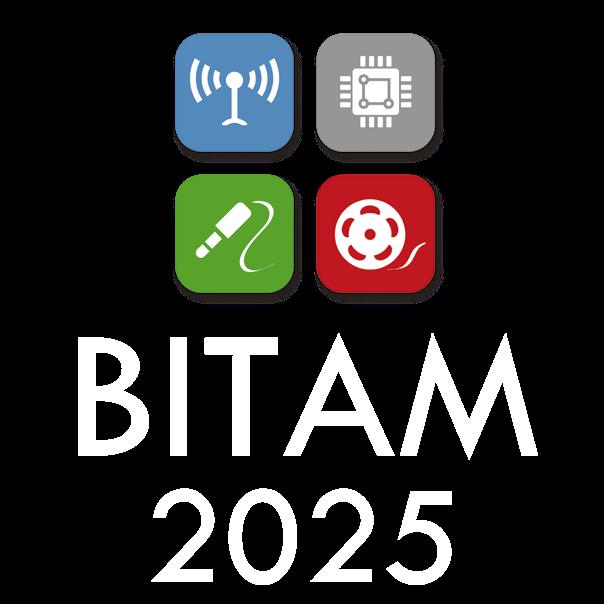
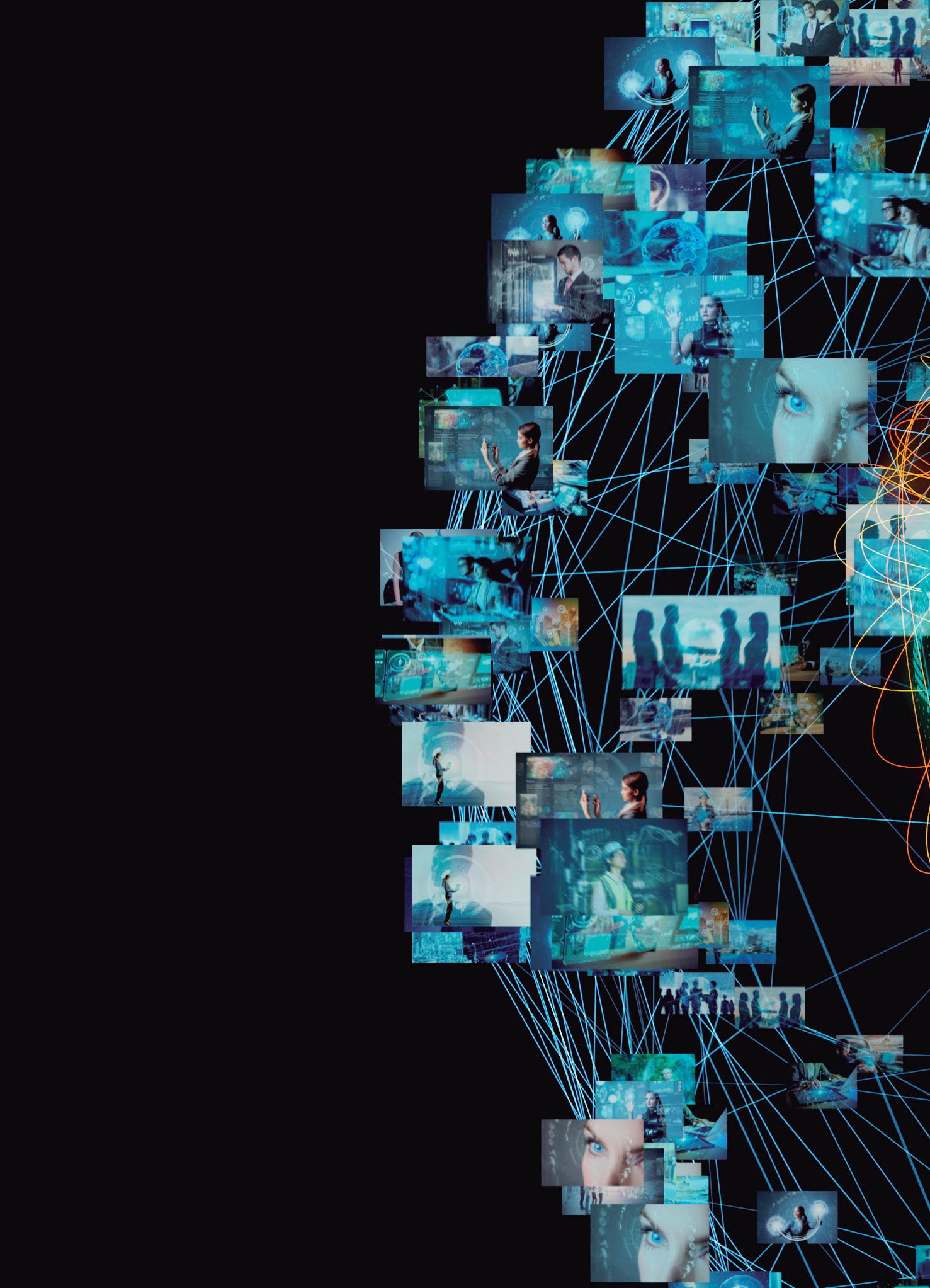
astoday’s driver, astomorrow’s frontier 5G 6G
INDUSTRY VOICES
Andy Bellamy, Technical Director at AJA ZOOM
OMTprotocol breaks intothemarket
TMBROADCAST BREAKFAST Towards new intelligent models TRENDS AVindustry outlook2025




astoday’s driver, astomorrow’s frontier 5G 6G
INDUSTRY VOICES
Andy Bellamy, Technical Director at AJA ZOOM
OMTprotocol breaks intothemarket
TMBROADCAST BREAKFAST Towards new intelligent models TRENDS AVindustry outlook2025

One of the clearest ways to witness the accelerated convergence between the broadcast and ProAV worlds is by observing how companies with a strong broadcast DNA are entering this adjacent vertical—so much so that, in some cases, it is becoming their most dynamic area of business.
This is one of the topics that came up in our interview with Andy Bellamy, Technical Director at AJA, featured in this month’s Industry Voices section. In it, he explains how clients from the corporate and education sectors are now among those driving the highest demand for AJA’s products.
Aware that the evolution of the audiovisual market as a whole is a matter of growing interest among broadcast professionals, we took the opportunity to revisit the key findings of the recently released Industry Outlook and Trends Analysis (IOTA) 2025 report, with insights from its authors at AVIXA. “An increasing number of integrators and solution providers are working across both sectors, influenced by shared
Editor in chief
Javier de Martín editor@tmbroadcast.com
Creative Direction
Mercedes González mercedes.gonzalez@tmbroadcast.com
Chief Editor
Daniel Esparza press@tmbroadcast.com
Editorial Staff
Bárbara Ausín
Carlos Serrano
technologies and changing content expectations,” confirms Sean Wargo, VP of Market Insight at the organization.
Among these “shared technologies” stands out 5G, which is opening up a whole new range of possibilities—particularly in the field of live production. These expectations are likely to accelerate with the advent of 6G, still under development and standardization. In this issue, we explore the key points of this transition with the help of InterDigital, a research and development company specialized in wireless, video innovation, and artificial intelligence.
In connection with all this, we also turn our attention to the new OMT standard, which has just entered the market and could position itself as an alternative to NDI in certain scenarios.
This month, then, we place special emphasis on some of the key trends that are transforming the industry, with the goal of continuing to anticipate the technologies that will shape tomorrow.
Key account manager Patricia Pérez ppt@tmbroadcast.com
Administration Laura de Diego administration@tmbroadcast.com
TM Broadcast International #146 October 2025
Published in Spain ISSN: 2659-5966
TM Broadcast International is a magazine published by Daró Media Group SL Centro Empresarial Tartessos Calle Pollensa 2, oficina 14 28290 Las Rozas (Madrid), Spain Phone +34 91 640 46 43
NAB SHOW NY 2025
NAB Show New York 2025: AI’s impact on journalism and the creator economy will take center stage
The 2-day event, held October 22-23 at the Javits Center, expects the attendance of 13,000 visitors and 300 exhibitors.
By Ophir Zardok, Head
ZOOM IN 5G as today’s driver, 6G as tomorrow’s frontier
We speak with Milind Kulkarni, VP and Head of Wireless Labs at InterDigital—a research and development company specialized in wireless, video, and AI innovation—to outline the guiding principles that will drive this transition.
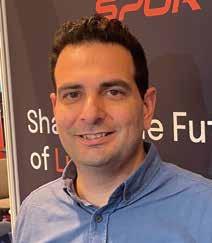



INDUSTRY VOICES
Andy Bellamy, Technical Director at AJA:
“Our BRIDGE products for the corporate and education sectors are at the top of customer demand”


OMT breaks into the market: keys to a new protocol that challenges NDI



Prime Sports has announced a suite of interactive features and AI-powered broadcast enhancements with the intention of offering new levels of personalization and engagement for fans. The innovations will advance the NBA on Prime’s slate of exclusive regular and post-season NBA coverage, as well as Prime Video’s NBA content available through add-on subscriptions, which include NBA League Pass and FanDuel Sports Network RSNs, as the company has claimed in a statement.
Set to debut is an opt-in personalized bet tracking experience with FanDuel, a customizable Multiview offering, AI-driven highlights on demand, live stats, shop the game opportunities, among others.
The NBA on Prime’s inaugural season will feature the following innovations:
Bet tracking and Odds View with FanDuel
Prime Sports’ new, opt-in personalized bet tracking experience with FanDuel brings together the streaming service for live sports with America’s #1 Sportsbook. The feature presents a real-time integration of betting information during live game action.
It allows viewers who subscribe to Prime Video and NBA League Pass to simultaneously watch a combination of NBA on Prime and NBA League Pass games across different devices, including smartphones and smart TVs.
Utilizing Prime’s proprietary AI models, at any point in the game, users can relive or catch up on the growing collection of in-game highlights, each featuring a full description of the play.
Rapid Recap provides a highlight reel that brings fans who join a
game late up to speed in two minutes or less. It employs AI to compile basketball moments for the viewer, and transitions them into live action once the recap concludes.
It offers a way to check player and team stats throughout the game. Provides access to traditional box score stats, along with stats powered by AWS, all in real-time without leaving the live game.
NBA on Prime is shoppable with Shop the Game. Viewers can find great deals, inspiring game-day fashion, and official NBA merchandise from brands like Pro Standard and Game. Viewers can access this shopping experience in two ways: by searching “shop the game” in the Amazon Shopping app, or by using their remote’s “up” button while watching NBA on Prime games to reveal an interactive Shop tab that sends instant notifications to their mobile device.
Range (HDR) Productions with Proprietary Ultra-Low Latency Tech
All NBA on Prime broadcasts are produced in native 1080p High Dynamic Range (HDR) video and 5.1 surround sound. Additionally, Prime Video and AWS technology aim to create a livestreaming solution that delivers ultra-low latency, eliminates drift and ensures synchronization.

EuroLeague is ramping up its social media activities for its new season in collaboration with LiveU. Aiming to grow the sport’s appeal to younger audiences, EuroLeague is increasing its real-time video content creation for its followers, as LiveU has claimed in a statement.
With the new season kicking off, the EuroLeague will deploy LiveU technology for the first time in Dubai, where Dubai Basketball will meet Partizan Mozzart Bet Belgrade.
With a total of 20 basketball teams from multiple countries competing in the new season, EuroLeague plans to utilize LiveU’s products and services for various games and in different cities throughout the upcoming months. Combining LiveU’s portable video encoders with the cloud-native LiveU Studio production service, the EuroLeague’s content creators can receive exclusive behindthe-scenes footage from any basketball arena via the cloud. As part of aN integrated solution and workflow, they are also able to produce their content in real-time from their Barcelona headquarters or any other remote workplace.
Out in the field, the setup is simple and straight forward whereby the camera operator can connect their cameras to a portable LiveU LU800 encoder and start the transmission within seconds. The mobile setup enables the field crews to move around freely in the EuroLeague host cities and keep up with
the speed. Through LiveU’s cellular bonding technology, underpinned by its LRT (LiveU Reliable Transport) protocol, the live camera signal is delivered to a cloud server where it is available for editing in LiveU Studio. Controllable from any web browser, LiveU Studio allows EuroLeague to add graphics and publish the program feed live on any social media platform.
“LiveU technology gives us the flexibility to go live from any EuroLeague city without having to travel with heavy equipment or set up a temporary production facility on-site. Our content creators can venture out in the cities where the rivalry series games take place and stream rough, authentic content – adding the street credibility and the behind the scenes access that our fans want to experience on a live basis”, stated Julien Segui, EuroLeague Basketball Head of Content. “At EuroLeague, we see ourselves as the world’s
most passionate basketball league, and we have countless exciting stories to share. We’re thrilled to start creating content with LiveU, enhancing direct interactions with our digital community, where fans can have direct interaction”.
“Nothing compares to the thrill of ‘Live’. Creating a shared fan experience, EuroLeague lets fans witness the action right when it happens – no matter where they are based or where their favorite team is playing”, added Ophir Zardok, LiveU’s Head of Sport Strategy and Business Development. “Our technology is being deployed by the world’s top leagues and we are thrilled to welcome EuroLeague to our global userbase. With LiveU technology making its debut in the competition, we are paving the way for future cooperation and more generations of enthusiastic basketball fans to come”.
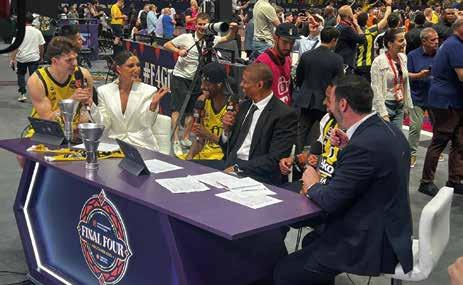
TikTok and LaLiga have announced the renewal of their partnership agreement, with the intention of maintaining the platform’s role as a priority partner for innovation in digital content for the competition, as the companies have claimed in a statement.
The global football community on TikTok is engaged with fans, clubs, and athletes, connecting with the objective of growing the sport. The renewal of this agreement means that the
platform will continue to offer content designed specifically for its ecosystem, under hashtags like #laligaeasports and #laligahypermotion.
As part of the renewed partnership, exclusive LaLiga content will arrive first on TikTok, ensuring fans are the first to see moments from competition, offering a look behind the scenes of Spanish football.
The collaboration will also be extended to users in 28 countries around the world, which will

have access to new experiences including in-app hubs and hashtags, allowing users to follow the latest news, and real-time content during match-days.
“Spanish football reaches a global audience on TikTok, this year our partnership will expand that global community allowing fans and new viewers to celebrate and enjoy amazing match action from some of the best clubs in the world”, explained Rollo Goldstaub, Global Head of Sports Partnerships at TikTok.
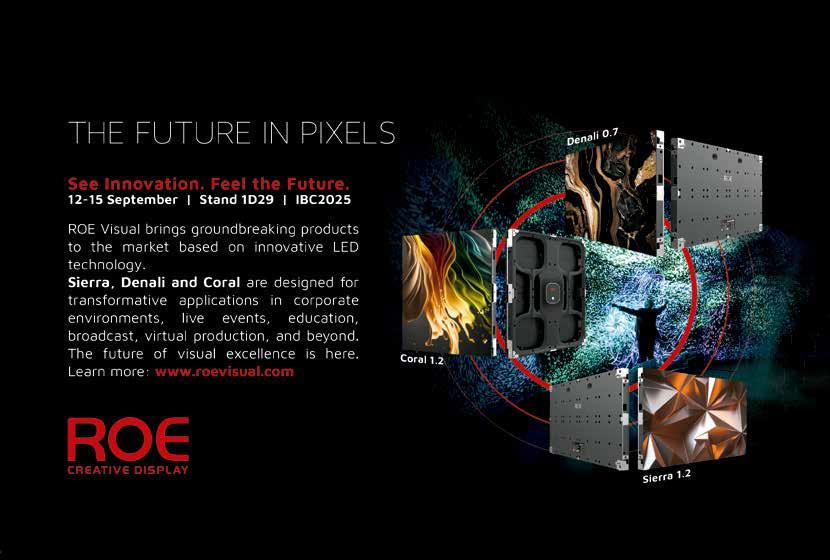
The Italian branch of DAZN in collaboration with NVP, has selected wTVision’s wVSet as the foundation of its new 450-square-meter studio in Milano. The objective is to deliver a virtual set and augmented reality solution workflow that offers a new era of the storytelling of Serie A in Italy via live shows, as wTVision has claimed in a statement.
After evaluating multiple solutions, DAZN and NVP together selected wTVision’s wVSet as part of the engineering plan for its focus on merging photorealistic environments with AR graphics while integrating into the broadcaster’s existing workflow. Editorial and production teams will deliver visually storytelling with real-time football data and virtual elements.
“Reflecting DAZN’s commitment to innovation and editorial vision, for our new Milano studio – we wanted to combine cutting-edge technology which could express our needs. With the technical expertise of NVP and the advanced solutions of wTVision we’ve designed a workflow that allows our teams to work seamlessly, focus on creativity, and deliver experiences and content that fans expect from DAZN”, explained Michele Dalai, Senior Vice President Content at DAZN Italy.
wVSet solution was designed to adapt to mission-critical live environments. Its architecture
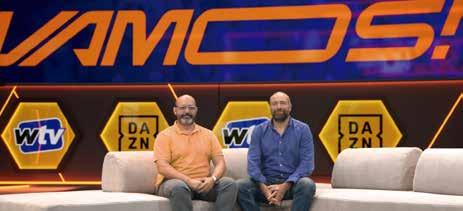
tries to ensure that DAZN’s teams can maintain control from concept to on-air, reducing complexity and eliminating silos. By integrating wVSet with DAZN’s broader graphics ecosystem, the studio offers a unified workflow where every element — from virtual backgrounds to live augmented reality — operates within the same environment.
This integration was implemented in collaboration with NVP, who ensured the technical deployment of the project with DAZN’s productions.
“The partnership with DAZN and wTVision represents the natural evolution of a journey that NVP has been pursuing for years, and which already began with DAZN last season. It is a path built on continuous innovation and the constant search for the most advanced technological solutions for our clients. Providing integrated, scalable, and cuttingedge production environments is part of our mission: offering tools that combine creativity and operational precision, in service of immersive and
high-quality sports storytelling”, added Ivan Pintabona, CTO and Board Member of NVP.
The outcome aims to ensure that editorial vision translates directly into on-air excellence. In addition, the system’s scalability guarantees future-proofing. Whether used for Serie A storytelling, live shows, talk shows, or special broadcasts, DAZN can adapt the same infrastructure to different formats without compromising performance or visual quality.
“This project with DAZN Italy reflects exactly what drives wTVision: partnership, people, and outcomes. When we design new technological solutions, we know it will be powerful, but only when it empowers people to tell better stories and simplifies the path from idea to on-air. With wVSet fully integrated into DAZN’s production and graphics workflow, their teams gain both creative freedom and operational control—a combination that transforms ambition into reality”, affirmed Ricardo Barros, Chief Operating Officer at wTVision.
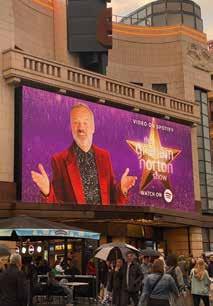
Spotify and Zoo 55, part of ITV Studios have announced a new partnership to bring its video content to the music platform for the first time, as it has claimed in a statement.
The partnership will see ITV Studios shows, beginning with episodes and compilations of ‘The Graham Norton Show’, as well as VICE Studios’ series ‘I Was a Teenage Felon’ and ‘Dead Set on Life’, become available to Spotify users.
Chris Whiteley, Managing Director of Northern Europe at Spotify, affirmed: “We are thrilled to welcome ITV Studios’ content to Spotify. ITV Studios bringing such high-quality, popular video programming to our platform allows us to further enhance the user experience and provides our audience with even more reasons to engage with Spotify. It’s a testament to the growing appeal of video on our platform and our ability to connect leading content creators with millions of listeners and viewers”.
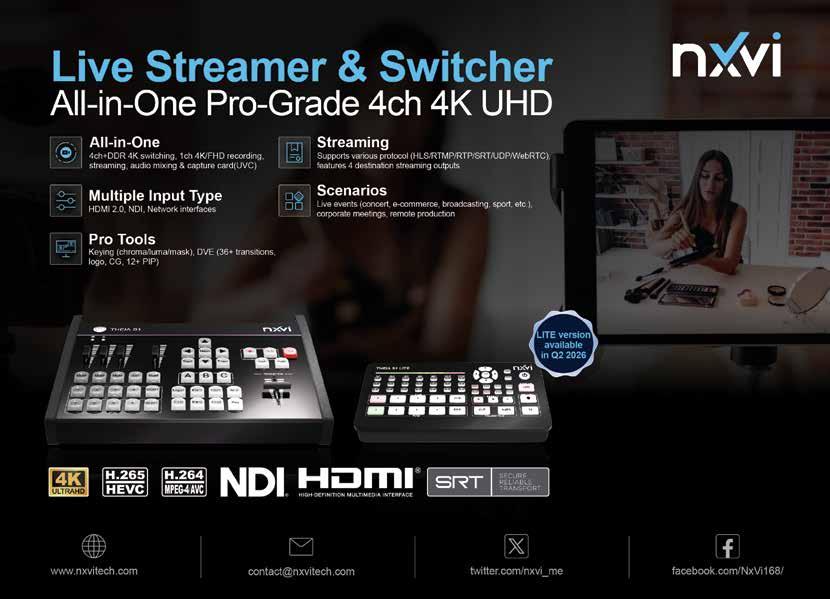
At ISE 2026, innovation will take centre stage, with newly announced highlights aiming to shape the next chapter of the event. Next year’s edition will return to Fira de Barcelona on 3–6 February 2026, as it has claimed in a statement.
Push Beyond has the intention of setting a new tempo for the global AV and systems integration industry, uniting the industry movers, shakers and changemakers.
This year’s theme, Push Beyond, is designed to mirror ISE’s drive for progress –which expanded by 5% from 2025. With four months to go until the show, more than 1,400 exhibitors are confirmed, including 184 first-time exhibitors.
Other new initiatives announced in the press briefing included:
Fira de Barcelona
Hall Zero Update
Looking to the future, Hall Zero at Fira de Barcelona is set to
redefine expectations. To meet the highest construction and safety standards, the Hall Zero completion date has been rescheduled, with ISE’s first use planned for 2028.
ISE 2026 will introduce Listening Suites in CC2, the newly refurbished heart of Fira Barcelona. Each suite is curated, blending acoustics with inventive design.
Sol Rashidi Announced as Keynote
Sol Rashidi, the world’s first Chief AI Officer for enterprises, will deliver a headliner keynote at ISE at 13:00 on Wednesday, 5 February 2026.
ISE 2026 will debut the Cybersecurity Summit. Taking place Thursday, 5 February 2026, the summit will be chaired by Pere Ferrer i Sastre, a senior public executive and
strategic advisor with over 15 years of experience in leadership roles across public safety, digital transformation, and critical infrastructure governance.
Barcelona 2026
ISE is partnering with EduTech Cluster and Fira de Barcelona to co-host the EdTech Congress on 4–5 February at the Palau de Congressos. The event is set to try to become a platform where educational purpose meets technological innovation.
Spark
Spark kindles a new chapter, where it ignites ideas to try to transform the creative industries. Making its debut in 2026, Spark is a cross-vertical gathering that unites the full spectrum of the creative industries.
3-6 February 2026. Registration opened Monday 6 October.
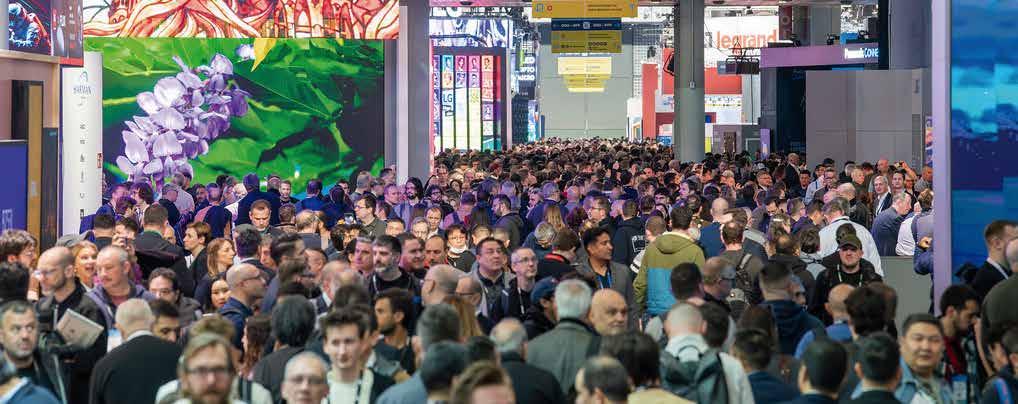
EVS has confirmed the completion of 2 acquisitions announced in the third quarter of 2025: Telemetrics and XD Motion per October 1st, 2025, as it has claimed in a statement.
The acquisition of Telemetrics was announced last August. A couple weeks later, on September, the company communicated the integration of XD Motion.
Both acquisitions have the ovjective of supporting
long-term creation through portfolio diversification: the combination of the 2 acquisitions leads to a new solution for EVS, named T-Motion, and looks forward to enabling EVS to address a new market, offering a range of Media Production Robotics, both indoor and outdoor.
Both acquisitions were presented and discussed during the IBC event taking place in Amsterdam in September 2025.

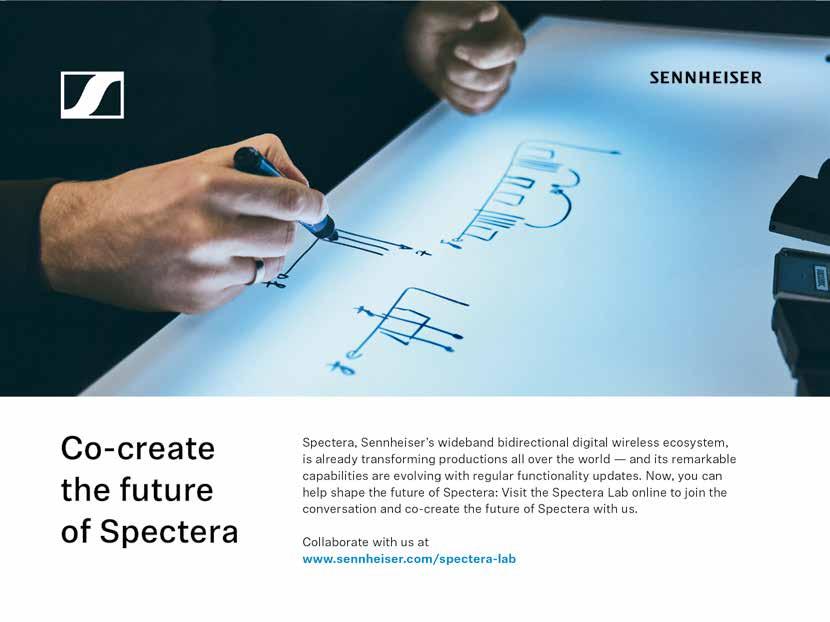

NEP Group has announced its acquisition of Seven Production, the Dubai-based film and broadcasting independent production company. The acquisition aims to reinforce NEP’s investment and presence in the GCC region, as it has claimed in a statement.
The announcement follows recent news of NEP’s growth in the region, including a new fleet of mobile units, and the recent hires of Waleed Isaac as President for NEP Middle East and Asia and Mohammad Hammoud as Chief Commercial Officer.
With the addition of Seven, NEP Middle East and Asia will become one of the largest companies of its kind serving broadcasters, production companies, event organizers and government entities in the region. The company will continue to
offer live production services including outside broadcast (OB) trucks, satellite trucks, flypack systems, connected production facilities, a network of studios in the Middle East, 4K/HD ENG broadcast cameras and equipment, wireless solutions and other services including crewing, live webcasting, Host Broadcast support and systems integration.
Martin Stewart, CEO of NEP Group, explained: “For NEP, this is an exciting expansion in a high-growth market that taps into Seven Production’s deep experience and knowledge. This partnership marks a significant investment for us in the Middle East, allowing us to deepen and expand our support for broadcasters, leagues, rightsholders, and producers who need a trusted partner equipped to meet their demands”.
Waleed Isaac, President of NEP Middle East and Asia, added: “We’re thrilled to welcome Seven to the NEP family—our companies are a perfect match. Culturally, we share having a strong focus on listening to our customers and shaping our approach to innovation based on what our customers need. We also understand their need for consistent international delivery with localised expertise. This deal positions us to deliver that seamlessly from day one”.
“Together, NEP and Seven will bring together the best of the best in terms of our people, technology, and 360 services to our clients”, affirmed Waleed Isaac, President, NEP Middle East and Asia
Pierre Tabet, Managing Director of Seven Production, concluded: “I’m proud of our employees and what they have accomplished as part of the Seven team. Joining NEP will add global resources and support for our engineering talent and open up even more business with international clients. We see this as a great fit and an excellent step forward for us, the industry and the region”.
Seven Production will become a part NEP’s Middle East and Asia regional grouping, with Pierre Tabet continuing as managing director of the NEP Middle East business.
For many years, the audio team of Netherlands rock and pop band Racoon has supported the band in their musical endeavors and has been working on introducing new tools for their craft. Monitor engineer Jelmer Dijkstra and FOH engineer Marty Brugmans are ahead of another string of concerts for the band’s latest album “It Is What It Is”, for which they are using Sennheiser’s Spectera wideband wireless ecosystem, as the company has claimed in a statement.
This spring, Racoon’s “It Is What It is” tour sold out the Netherlands’ most iconic venues, such as MartiniPlaza, Rotterdam Ahoy, Mainstage Den Bosch, and AFAS Live. After a short summer break, they embarked on the second leg of the album tour at the end of August, before the start of their theatre tour in October.
Racoon are Bart van der Weide (vocals, harmonica), Dennis Huige (guitar), Maarten van Damme (bass), Paul Bukkens (drums) and Manu van Os (keys) – all are long-time Sennheiser users. For the spring tour, the band acquired
a Spectera wideband ecosystem for in-ear monitoring.
Dijkstra and Brugmans have been part of Racoon’s musical journey since 2012 and 2009, respectively. They have known each other for 21 years, and have both been into music and sound “like forever”.
Brugmans recalls how in 2024, Vincent Tilgenkamp, technical application engineer with Sennheiser, introduced them to Spectera. “After three seconds of listening in I said: OK, we need two of them. And that’s what it’s all about, it’s all about sound, happy people on stage, backstage, and in the audience!”
The engineers and the band had previously been using 2000 series in-ears. Dijkstra tried to compare the in-ear sound. “But you can’t compare Spectera with the old system, it’s just so completely different”, he affirmed. “It sounds very, very open, left is left is left and right is right, and this is something we’ve never had. The same goes for the ambience. It was indeed a bit shocking to hear
the atmosphere; it was completely different in a very positive way. Of course you always had applause mics, but they didn’t sound like they should. At the rehearsals, when we played with an audience for the first time with the new system, I pushed the faders for the audience mics, and wow, you could put them around the band for them to experience the atmosphere and not just to listen to it. You are there, you are not just listening. That’s a big difference”.
Brugmans added: “During rehearsals, I looked at the faces. We have two musicians who are very critical, as in VERY critical. Paul, the drummer, has tried everything with monitors and has always been searching for the best equipment. At the time, he was on wired in-ears with pre-amps. When Vincent and Jelmer connected Spectera, he put his in-ears in and started drumming, and soon began to thoroughly enjoy what he was hearing. Afterwards, he said to Jelmer: ‘OK, I don’t need this stuff any more, I’ll take the Spectera.’ That says enough to me”.

The event debuted the “Future Tech” to offer live demonstrations of generative and agentic AI, immersive and interactive media, cloud-native workflows, private 5G networks, and sustainable innovation
IBC 2025 wrapped up this year’s edition with 43,858 attendees from 170 countries, and more than 1,300 exhibitors, as 600+ speakers. However, the event, which was experiencing an upward trajectory since 2022, has seen a slight decrease in the number of visitors.
IBC 2024 drew over 45,000 visitors, as 1,350+ exhibitors, marking the third consecutive year of growth for IBC. In previous shows: IBC 2023 attracted 43,065 attendees and over 1,250 exhibitors, and IBC 2022, the first live IBC Show since 2019, welcomed 37,071 visitors and more than 1,000 exhibitors.
Despite this, the RAI in Amsterdam again witnessed the show’s influence, bringing together the world’s media, entertainment and technology community to cover the trends that are transforming the ecosystems of broadcasting and content creation.
To accommodate the fair, the 46,000-square-meter space was divided into 14 dedicated halls,

which were organized by specific product sectors: Halls 1, 2, and 3 for Delivery, Distribution and Satellite ; 4 and 5, Content Everywhere, Streaming, OTT Platforms, Cloud Services, Cybersecurity and App Development; 6 and 7, Post-production, Graphics, Media Production and Data Storage Solutions; 8 and 10, Multi Technologies, Production, Management, Audio and Transmission; 9, 11, 12, and 13, Production, Cameras, Lenses, Lighting, Video and Accessories; and, finally, hall 14, Future Technologies, AI, 5G, Ad Tech.
“IBC 2025 has delivered real business outcomes with overwhelmingly positive feedback from attendees”, affirmed Michael Crimp, Chief Executive Officer of IBC. “What struck me most was the sense of optimism and purpose — exhibitors, visitors, speakers, and partners all came here to shape the
future of our industry. We look forward to continuing the journey together next year”.
Carlos Octavio Queiroz, Director of Data/AI, Partnerships and Architecture at Globo, summed it up: “IBC 2025 continues to be the world’s essential meeting place for media professionals from across the globe. We brought a large delegation this year because we know how important IBC is for driving innovation, exchanging ideas, and connecting with our most important partners and suppliers. Being recognised with an IBC 2025 Special Award during our centenary made it all the more meaningful”.
From September 12th to 15th, debates and innovations focused on the six key trends that shaped this year’s event: Artificial Intelligence, Cloud Computing, Advertising Technology, OTT & Streaming, Connected Technologies, and Immersive Technology.
These themes were especially explored in Hall 14, were IBC 2025 debut the Future Tech, a dynamic new hub for emerging technologies and collaborative projects. The area offered live demonstrations of generative and agentic AI, immersive and interactive media, cloud-native workflows, private 5G networks, and sustainable innovation. It featured:
› Future Tech Stage: Packed with keynotes, panels, and live demos – including the Accelerator PoCs.
› IBC Hackfest x Google Cloud: A two-day hackathon with digital innovators, tech entrepreneurs, software developers, creatives, and engineers tackling real M&E challenges using Gemini AI and more.
› Google AI Penalty Challenge: A football-fan experience to showcase AI-driven decision-making in sports performance.
› 100 Years of Television.
› Networking Hub.
› 2025 Accelerator Media Innovation Programme.
“This year’s IBC was buzzing with energy, innovation and real momentum, especially in Future Tech”, added Skander Ben Attia, CTO, France Télévisions. “Our 5G-enabled light aircraft drew huge attention, sparking fantastic conversations about what’s next in connected media. We were proud to be part of the IBC Accelerator project exploring the deployment of private 5G networks in the air. Introducing our C2PA initiative at IBC was also a major milestone, and an opportunity to reaffirm our commitment to content authenticity and public trust in journalism”.
“We’re witnessing a pivotal moment of innovation and transformation across media and entertainment – and IBC 2025 has truly positioned itself at the epicentre of it all”, explained Brijesh Yadev, Global Business Leader, Sales & Product Management at Tata Communications, a Future Tech exhibitor. “There’s been tremendous interest in the hands-on experiences and breakthrough technologies that we and others showcased”.
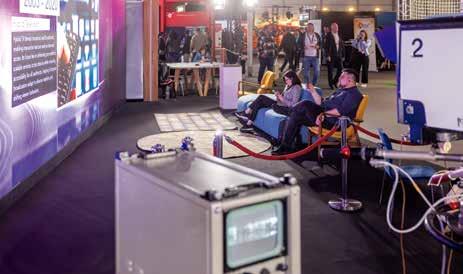
Additionally, IBC explored other pillars such as Shifting Business Models, Transformative Tech and People & Purpose, both in the exhibition hall and in the different presentations. This was designed with the intention of providing unrivalled opportunities to meet buyers, decision-makers and partners, benchmark against competitors, and build strong sales pipelines.
“IBC is always a key event for Avid – it’s where we unveil our latest innovations, strengthen relationships with customers and partners, and gain valuable industry insights”, said Angela Stelle, Chief Marketing Officer at Avid.
“IBC2025 has been an outstanding event for Grass Valley with high quality engagement on the stand – the people we want to meet were at IBC”, added Jon Wilson, Chief Executive Officer of Grass Valley.
The IBC 2025 Conference gave delegates an agenda-setting view of the industry’s most critical issues, from the rise of AI and new business models to sustainability and storytelling. Sessions with speakers from ITV, Netflix, Warner Bros. Discovery and other leading industry players and thought leaders drew standingroom-only audiences. Icons like Thelma Schoonmaker, the multiOscar-winning film editor who worked with Martin Scorsese, and director Bernard MacMahon from the Becoming Led Zeppelin documentary team brought creative inspiration – while the IBC Technical Papers provided insights into practical innovation during the different sessions.

Rollo Goldstaub, Global Head of Sports Partnerships at TikTok and a speaker at the Conference, noted: “It was an amazing way to learn about new things, especially topics I hadn’t even thought I would go and listen to – and I found them fascinating. From a TikTok perspective, we’re really looking to shape the future of sports, and IBC lets us meet the creators that can help us do that. It’s a joy to all be in one place”.
IBC 2025 highlighted that innovation is not only about technology but also about people. Jon Roberts, Chief Technology Officer at ITN, stated: “You could really feel this year how the IBC community is expanding, with younger voices adding fresh energy to more established leading voices, all with a shared appetite for collaboration and innovation. IBC 2025 felt more dynamic, inclusive and forward-looking, exactly what our industry needs to thrive and move confidently into the future”.
“IBC 2025’s Talent Programme built on the success of last year’s launch, addressing the industry’s urgent need to attract,

develop and support new talent”, said Carrie Wootten, CEO of Global Media and Entertainment Talent Manifesto and a speaker in the programme. “From mentoring to fast-pitch networking to conversations on building a sustainable talent pipeline, IBC worked closely with us and many others to foster fresh perspectives and vital connections – helping the next generation of media professionals feel seen, supported and inspired”.
The show floor aimed to reflect the strength of the global M&E community, with players including Amazon Web Services, Ateliere, Avid, Blackmagic Design, Canon, EVS, Grass Valley, Microsoft, Panasonic, Ross Video, Samsung, Sony, Tata Communications Media, and Zattoo among the exhibitors. Newcomers such as Baron Weather, Cachefly, Files. com, Momento, NewBlue, OTT Solutions, Plain X, Raysync, and Remotly wanted to ensure every hall showcased groundbreaking advances in production, distribution, cloud, streaming, and next-gen consumer experiences.
One of the final highlights took place on Sunday, September 14th at 18:00. The “IBC 2025 Innovation Awards” revealed the winners of the five categories on the main stage. Which are:
› For Content Creation – Deep Ocean: Kingdom of the Coelacanth.
› For Content Distribution – Sky’s MediaMesh.
› For Content Everywhere – SVTAV1: Alliance for Open Media, Intel and Meta.
› For Social Impact – Empowering citizen advocacy and social justice through technology.
› For Environment & Sustainability – World First Greening Live Broadcasts: Energy-Efficient UHD Upscaling with NPU for Sustainable IPTV Service.
During the ceremony, three other awards were also presented:
› International Honour for Excellence Award: Thelma Schoonmaker, the film editor whose collaboration with Martin Scorsese over five
decades has helped shape the visual language of modern cinema.
› Best Technical Paper: Alexis Allemann, Sébastien Noir and Andrei Popescu-Belis, for their paper titled EBU NEO (a multilingual chatbot for a trusted news ecosystem exploration).
› Special Award: Globo, for a century of innovation in storytelling, audience connection, and digital transformation.
IBC has already announced that IBC 2026 will be back from 11-14th September 2026, in Amsterdam.
Ikegami displayed its innovations in a “football stadium” booth Ikegami’s booth showed a new design in the shape of a football stadium: The cameras were shown on the field, whereas an OB Van accommodated the regie area with monitors, operation control panels and camera control units.
The company showcased the latest products, including the new ultra-compact box camera, UHL-X40, the new wireless camera UHK-X700RF, and the brand-new 7-inch OLED color viewfinder, VFE-P711AD. Almost the entire broadcast product range of cameras was available, and the entire monitor range was on display in the OB Van’s area, where the remote control panels OCP-500, OCP-300 and MCP-300 could be tested along with the virtual control panel VCP.
NxVi offered workflow tests addressed to industry challenges
NxVi Technology designed its stand with the intention of offering it as a space to participate in hands-on workflow tests, and to offer interactive demo stations.
Its display addressed industry challenges, including: the realtime AI accelerator-embedded generative AI and video inference box, the multi-channel UHD video recorder and player supports Apple ProRes and Sony XAVC formats, the 4K multi-channel UHD switcher and streamer, the broadcast-grade HEVC 8K/4K encoders/decoders supporting 4:2:2 sampling and 10-bit HDR, the 8K Extraction System, the Instant Replay System for live events, and its 4K/8K HEVC real-time encoding application scenario for immersive and metaverse experiences.
Lawo unveiled its latest HOME Audio Shuffler app
At the event, among its solutions, Lawo introduced the HOME Audio Shuffler app, a software-based replacement for a traditional baseband audio matrix within an IPbased Dynamic Media Facility. It
features SMPTE ST2110-30 (24 bits) and -31 (32 bits, RAVENNA AM824 payload format with bit transparency), and conforms to AES67 and ST2110-30 (Levels A, B and C) with minimal latency, while also providing redundancy options via ST2022-7 (Seamless Protection Switching).
The app supports up to 16,384 input and output signals and offers flow sizes between 64 and 2048 RX and TX streams, each accommodating up to 64 audio channels.
Vizrt showcased its solutions in different experience areas
Vizrt had the objective of demonstrating what can be achieved across media & entertainment, sports, enterprise, and content creation. It also highlighted the partnership between Zoom and TriCaster.
Its booth offered experience areas focused on Live Event Automation and Future-Ready Newsrooms, that worked with Viz Mosart, Viz Engine, Viz Flowics, Viz Pilot Edge, TriCaster Vizion, Viz Multiplay; and AI-Enhanced Virtual Studios, withViz Virtual Studio, Viz Engine, Viz Arc, Viz Trio.
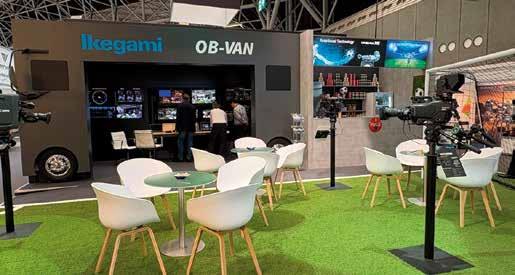


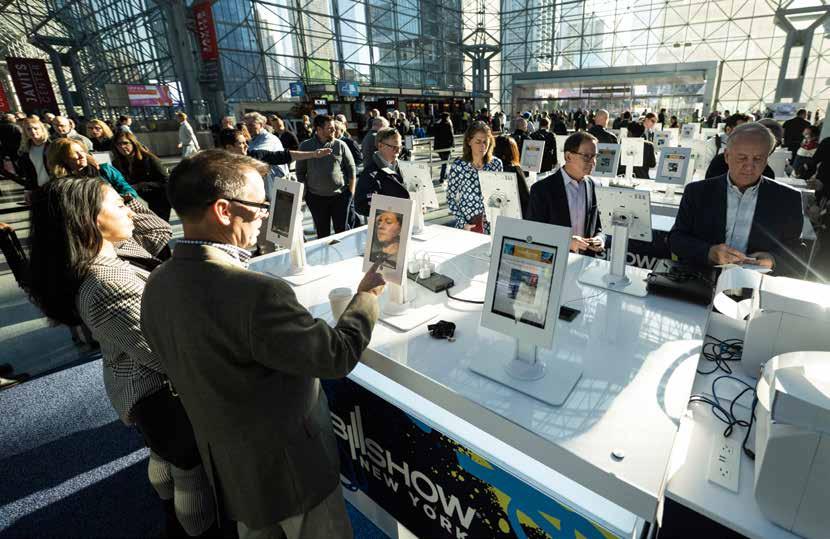
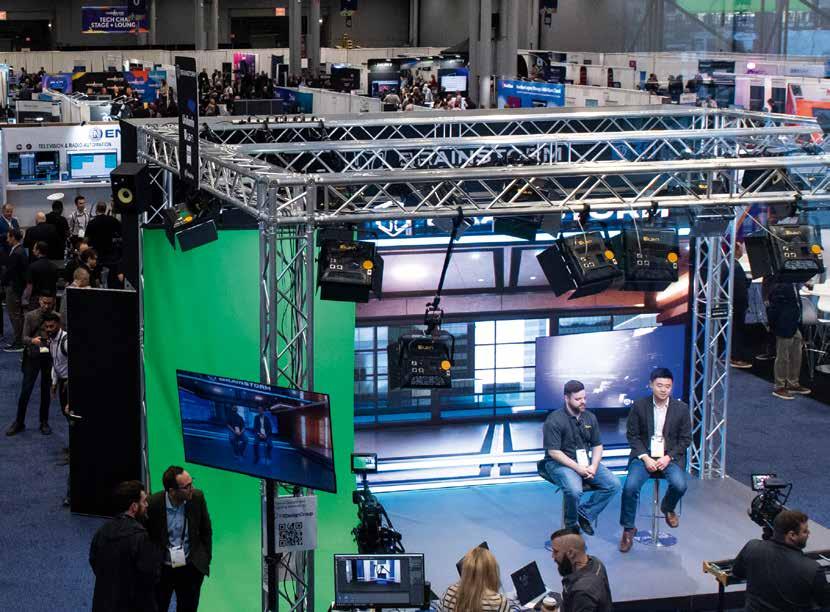

The 2-day event, held October 22-23 at the Javits Center, expects the attendance of 13,000 visitors and 300 exhibitors
By Bárbara Ausín
Once again, Manhattan’s Javits Center will open its doors to host the 2025 NAB Show New York, the East Coast’s event that brings together content creators and production professionals from radio, broadcasting, sports, live events, advertising, marketing, film and television. Taking place on October 22–23, the show will discuss media,
entertainment and brand storytelling, and will offer programming that unpacks AI in newsrooms, the fastmoving creator economy, the reinvention of live sports and the next generation of production tools.
The 2024 NAB Show New York concluded with more than 12,000 attendees, 250 exhibitors, 50 of which were first-timers, and over 75 educational
sessions. For this year, Karen Chupka, NAB’s executive vice president and managing director of Global Connections and Events, informed that they are expecting 13,000 visitors to connect with 300 exhibitors. By the time this issue went to press, 222 companies were confirmed to be featured on the exhibit floor, 41 of which are first-time exhibitors.
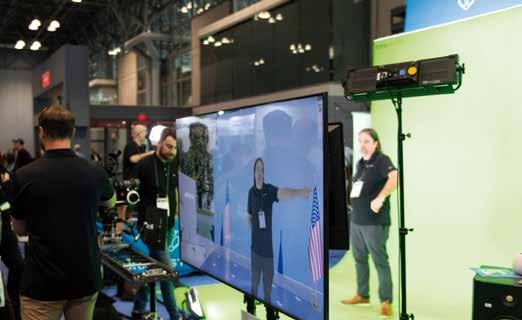
Each day will focus on different highlights, which are: Broadcast, AI, Content Creators, Sports and Storytelling Innovations. Day One, Wednesday, will concentrate on “Business of Broadcast and Media”, from sports and journalism to cloud workflows and tech strategy. It will be all about scaling content, driving revenue and staying ahead in a competitive landscape.
On Thursday, Day Two, “Future of Content” will be the topic of the day, which will dive into AI tools, viral campaigns, immersive tech and the bold ideas pushing content forward. However, to prepare for it, the show will begin lately on Tuesday, October 21, with the NAB Marconi Radio Awards dinner at the Edison Ballroom, to celebrate radio excellence and outstanding industry achievements.
The next day, Catherine Newman, Chief Marketing and Communications Officer at the U.S. Soccer Federation (USSF), and David Wright, USSF’s Chief Commercial Officer, will be in charge of the inauguration with a discussion about media strategy, partnerships, digital platforms and the art of building fandom in a crowded sports landscape. Also, Alessandra Catanese, CEO of Smosh, will be in charge of Thursday’s keynote session, where will talk about building and monetizing loyal fan communities through exclusive content, live streams and direct engagement.
For this edition, NAB Show New York has added two new novelties to emphasize the innovations
that are transforming different industries such as journalism, the creator economy, and live sports, among others.
First, on October 22 the “Future of Journalism” will examine AI and automation in news production to discover how this tool is transforming the way the information is gathered, produced and disseminated. Sessions will explore how solutions might lie in hybrid funding models, niche journalism and community-supported platforms. Speakers include Oliver Darcy, Founder and Author at Status (formerly CNN’s senior media reporter); Sara Fisher, Media Correspondent at Axios; Amy Freeze, Meteorologist, Innovator and Public Safety Advocate at AmyFreeze.AI; Thomas Germain, Senior Technology Journalist at BBC Studios; Curtis LeGeyt, President and CEO of the National Association of Broadcasters; and Mark Lukasiewicz, Dean of The Lawrence Herbert School of Communication at Hofstra University.
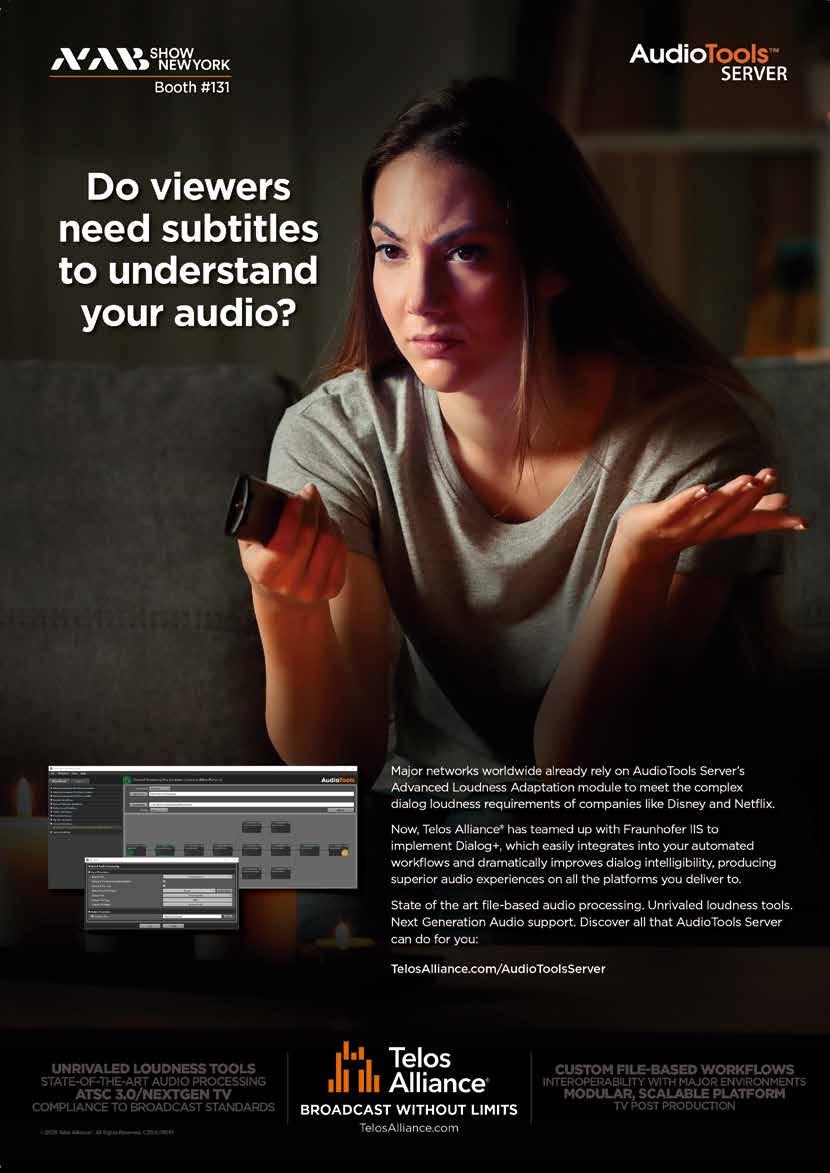
On the other hand, on October 23, the program “Creator Day” will spotlight the evolving creator economy in entertainment, news and sports. Influencers, brand leaders and sports execs will share how creators drive audiences, partnerships and storytelling. Notable speakers include Lauren Inganamort, Head of Strategic Brand Partnerships at LTK; Michael Calvin Jones, SVP at Wasserman Creators; and Sadaf Kazmi, Head of Creator and International Products at Audible.
Additionally, at Puff Media, a team of digital storytellers will demonstrate TikTok’s live shopping and entertainment features in real time, while also hosting TikTok Shop partners,
creators and brands for opportunities to connect and collaborate.
In this same line, the novelties also expand to the conference programming that this year will add:
› Radio + Podcast Interactive Forum (Oct. 22): Professionals in programming, tech, marketing and monetization will explore AI’s rising influence, datadriven revenue, social-first storytelling and how niche content is winning over next-gen audiences.
› Local TV Strategies, in partnership with TVNewsCheck (Oct. 22): TV station group leaders and futurists will show new revenue streams, evolving content strategies
and technology-driven efficiencies. Headline speakers include Catherine Badalamente, CEO, Graham Media Group; Adam Symson, CEO, E.W. Scripps; Rob Weisbord, COO and President of Local Media, Sinclair; presidents and GMs of several flagship network affiliates; and executives with companies including Tegna, FanDuel Sports Network, Nexstar and Fox Corp.
› Post|Production World New York, in partnership with Future Media Conferences (Oct. 22–23): Designed for editors, producers and motion designers working in TV, film and video, these 2-day sessions will try to level up their creative game and hands-on skills.


5G 6G as today’s driver, as tomorrow’s frontier
We speak with Milind Kulkarni, VP and Head of Wireless Labs at InterDigital—a research and development company specialized in wireless, video, and AI innovation—to outline the guiding principles that will drive this transition
By Daniel Esparza
New workflows and innovative formats are reshaping the broadcast industry. Among the technologies driving this shift, 5G has emerged as one of the most transformative, particularly in live production. Looking ahead, the arrival of 6G— still in the development and standardization stage— promises to unlock an even wider range of technical and creative opportunities. This article outlines the guiding principles that will underpin this transition.
First, it is worth revisiting the advantages that 5G brings over 4G, which can be summarized in three areas: higher speed, greater efficiency, and lower latency. “Compared to previous generations, 5G provides faster data rates, lower latency, and more efficient transport of video content. This has opened the door
to new applications in XR, streaming, and gaming,” explains Milind Kulkarni, VP and Head of Wireless Labs at InterDigital, a research and development company specialized in wireles, video, and AI innovation. The company works closely with organizations such as 3GPP and MPEG to shape the technologies that underpin the mobile ecosystem.
While its professional broadcast applications are critical, it should not be overlooked that 5G also delivers direct advantages to end users. High-quality streaming on mobile devices—such as watching a football match—has already become a standard expectation. Another clear example is online gaming, where the ability to interact in real time with players across the globe depends entirely on low latency.
Integrated Sensing and Communication (ISAC), artificial intelligence in the network and ubiquitous connectivity will define the next generation of mobile technology
Kulkarni highlights the crucial role of 5G in powering the latest generation of XR glasses, such as Meta’s collaboration with Ray-Ban. “Every time you look at an object behind you through these glasses, the image has to be captured, sent to the cloud for analysis, and then returned to your glasses in real time. That process is only possible with the speed and latency improvements enabled by 5G,” he emphasizes.
The real relevance for broadcast lies in live production and contribution workflows. The reduced latency and higher bandwidth of 5G allow broadcasters to experiment with cameras connected directly to mobile networks, eliminating in some scenarios the need for OB vans, or complementing traditional satellite and fiber contribution.
Remote production is a natural beneficiary.
By connecting cameras and audio feeds over 5G, broadcasters can cover events with far fewer resources on site, centralizing operations in production hubs. The model promises significant cost savings and simultaneously reduces environmental impact— factors that are increasingly critical in the coverage of sports and entertainment.
So what are the timelines for 6G, and what can we expect from the next generation of mobile technology?
First, it should be noted that the International Telecommunication Union (ITU) has set the vision for 6G, and standards bodies worldwide are actively defining use cases and requirements.
“In March this year, 3GPP held a workshop to decide which areas to continue developing under 5G and which to take forward under 6G,” Kulkarni explains. InterDigital, which contributes to international
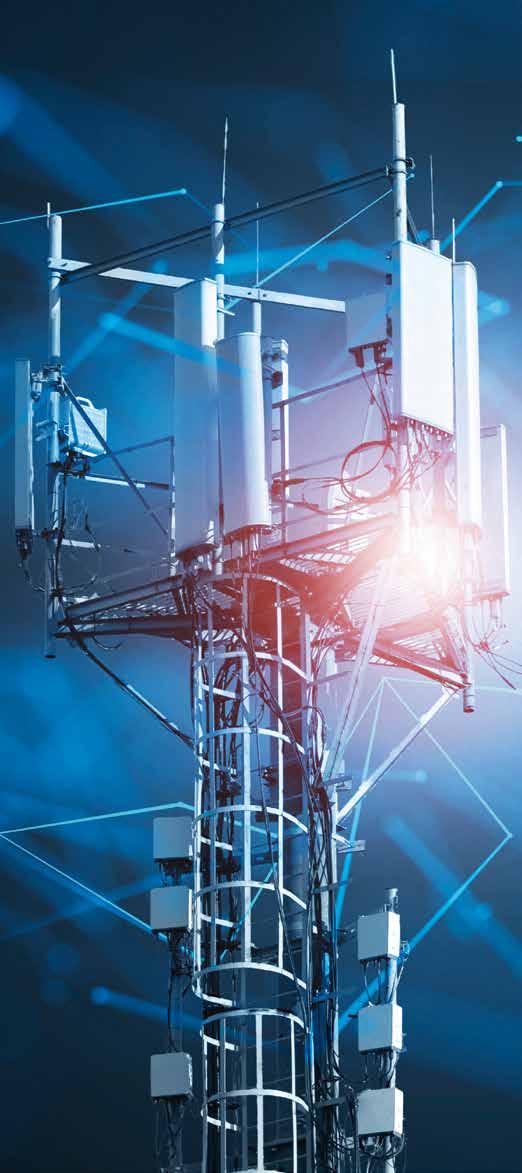
standards and licenses its technologies to major players such as Samsung and Apple, has been actively involved in this process.
“They are now studying these areas in detail, with the aim of completing study items in Release 20. The actual specifications will be developed in Release 21, expected around 2029. Deployment of products based on those specifications will likely happen around 2030 or 2031.”
This timeline means broadcasters still have several years to prepare, but the vision of 6G is already clear. According to InterDigital, three new areas will define the next generation:
› Integrated Sensing and Communication (ISAC): Until now, mobile networks have only communicated, while radar systems performed sensing. 6G aims to merge the two, turning antennas into sensors that can map the environment and enable new services.
› Artificial Intelligence in the Network: AI is already being applied in 5G, but in 6G it will be deeply embedded at multiple levels, from signal processing to energy efficiency and spectrum management.
› Ubiquitous Connectivity: Building on early 5G efforts to link satellites and terrestrial networks, 6G will create a seamless global system in which users can connect anywhere, anytime.
6G ahead: “The actual specifications will be developed in Release 21, expected around 2029. Deployment of products based on those specifications will likely happen around 2030 or 2031”
For broadcasters, sports remain the most demanding test environment. Latency, reliability, and quality are non-negotiable when delivering live coverage of global events. InterDigital sees this domain as a natural proving ground for its innovations.
“We presented at MWC Barcelona this year on how sports and entertainment can really benefit from 6G.
Our video, wireless, and AI technologies come together to create immersive experiences—so realistic it feels like you’re inside the Olympic Stadium watching the Games in real time,” says Kulkarni.
This vision dovetails with broader industry efforts. Broadcasters and rights-holders are already experimenting with multi-angle streaming, augmented reality overlays, and immersive fan experiences. As 5G
matures and 6G emerges, these trials will evolve into mainstream offerings.
For the broadcast sector, 5G is not just another upgrade in connectivity—it is a strategic enabler of new workflows and audience experiences. And with 6G on the horizon, the opportunities multiply: integrated sensing for smarter production, AI-optimized networks, and ubiquitous coverage that makes live broadcasting truly global.
By Ophir Zardok, Head of Sports Strategy & Business Development, LiveU

Few industries test the limits of live broadcast innovation quite like sport. It demands instant responsiveness to live moments, the mobility to cover vast distances between venues, multiple camera perspectives and increasingly immersive fan engagement. For these reasons, sport has consistently been a proving ground for emerging broadcast technologies. 5G is no exception.
When 5G first emerged, it was promoted largely as “faster internet”. While speed is important, its real contribution to live production increasingly lies in its reliability and flexibility and in enabling advanced capabilities such as intelligent resource management.
Crucially, 5G enables network slicing – the ability to allocate a dedicated portion of the network to a particular service. In a stadium environment where tens of thousands of fans are simultaneously using their devices, network slicing ensures broadcast contribution is ring-fenced from congestion. Similarly, private 5G networks are being deployed at arenas and training facilities, giving broadcasters full control over coverage and performance. These advances mark a significant step forward from previous generations of mobile connectivity.
Importantly, 5G is no longer an experimental technology. Broadcasters across the globe are already integrating 5G into live workflows, with 2026 widely seen as the tipping point for mainstream adoption in sport.
Major international events such as the Winter Games in Italy and the World Football Championship in North America (both of which will take place in 2026) will highlight the full potential of 5G. With venues spread across wide geographic areas, broadcasters need solutions that are mobile and not dependent on fixed infrastructure. Lightweight field units connected to local 5G networks enable crews to move between venues without rebuilding connectivity from scratch – an enormous gain in flexibility and efficiency.
Recent LiveU deployments provide a glimpse of what’s possible. At the International Belgian Judo Open, a 5G cloud production proof-of-concept (POC) delivered live coverage across Europe in collaboration with Orange Belgium, Atmosfair, ID2Move and Dreamwall. The POC included an immersive augmented reality (AR) component, proving that developing sports can achieve broadcast-quality output without heavy on-site infrastructure. Elsewhere, the Rolex Fastnet Race, the world’s biggest offshore yacht race, integrated AI-driven optimisation. In this case, LiveU’s LIQ, which dynamically and intelligently switches mobile network operators to provide the highest performing
set of cellular connections available, was used on the RIB (Rigid Inflatable Boat) to ensure a reliable signal would be maintained in these most demanding circumstances chasing the fleet at up to 15-20 knots. It was a powerful example of how 5G can strengthen resilience in dynamic, challenging environments, bringing uninterrupted live coverage to global audiences.
Increasingly, broadcasters are adopting 5G as a backup or disaster recovery path for traditional workflows
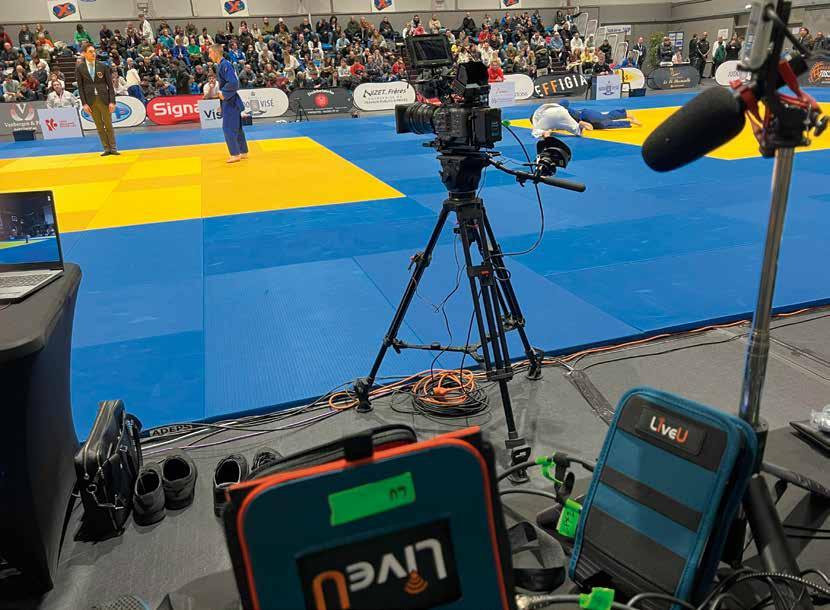
AI-driven optimisation platforms can dynamically select the best available network path in real time, ensuring stable high-quality live feeds
Another critical role for 5G in sports production is as a reliability layer. At major events, redundancy is essential: if one system fails, another must take over instantly. Increasingly, broadcasters are adopting 5G as a backup or disaster recovery path for traditional workflows.
Leading sports broadcasters have incorporated 5G into their production strategy as a safeguard. If physical mixers in the studio fail or the primary network connection drops, production automatically switches to a cloud-based workflow running over 5G. For the audience at home, the transition is seamless – coverage continues without interruption. This approach underscores how 5G is not simply faster, but enables greater resilience.
The benefits of 5G are amplified by complementary technologies. AI-driven optimisation platforms can dynamically select the best available network path in real time, ensuring stable high-quality live feeds. Multi-link, multi-slice bonding, combining 5G network slices, private and public 5G and even other IP connections, further
strengthens reliability, giving broadcasters the confidence to rely on 5G for mission-critical live coverage.
Meanwhile, the growth of cloud production has been accelerated by 5G’s low latency and consistent throughput. While remote production (REMI) was already possible over 4G, 5G makes it more reliable, higher in quality and easier to scale, supporting live productions of far greater complexity across dispersed venues. Video contribution feeds can be delivered into virtual production environments with greater consistency, reducing the need for large on-site crews and equipment, cutting costs while supporting more sustainable production practices.
Broadcasters across the globe are already integrating 5G into live workflows, with 2026 widely seen as the tipping point for mainstream adoption in sport
In Europe, LiveU recently collaborated in the EU Horizon FIDAL project to demonstrate multi-link, multi-slice 5G bonding, showing how network slices can be dynamically allocated to guarantee bandwidth and latency for different aspects of a live remote production — an important step toward scalable, cost-efficient workflows.
While not the primary driver of adoption, sustainability is an increasingly important consideration. By enabling remote
production, 5G reduces the size of travelling crews, the volume of technical equipment shipped to venues and the overall carbon footprint of a live broadcast. In an industry where environmental impact is under increasing scrutiny, these efficiencies are gaining traction alongside the operational benefits.
The next few years will see the technology’s capabilities tested on the grandest of stages, from the slopes of Italy to the football stadiums of North America
Live sports production is entering a new era where mobility, resilience and flexibility are paramount. 5G has already proven itself in live deployments across disciplines as varied as football, sailing and martial arts. The next few years will see the technology’s capabilities tested on the grandest of stages, from the slopes of Italy to the football stadiums of North America.
For broadcasters and sports media rights holders in general, the message is clear: 5G is not just about speed. It is about creating more agile, robust and sustainable production models that meet the ever-growing expectations of sports audiences worldwide. With 2026 on the horizon, the industry is approaching a genuine transformation – one in which 5G will play a central and permanent role.
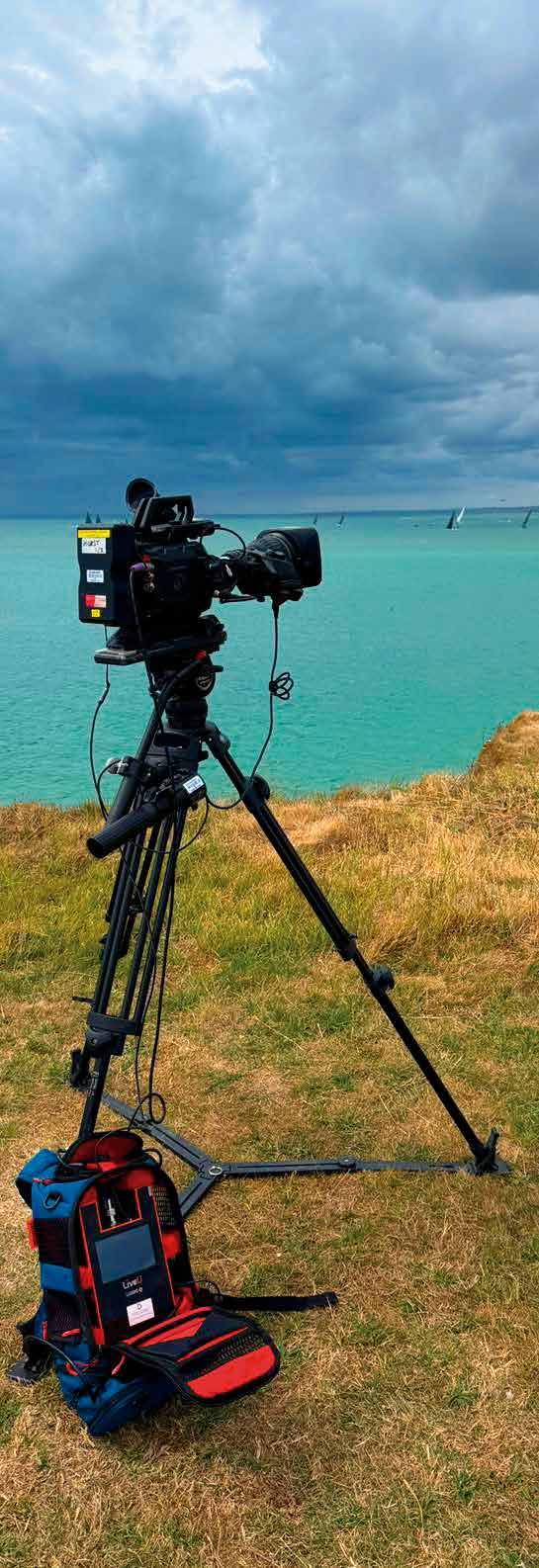

“Our BRIDGE products for the corporate and education sectors are at the top of customer demand”
We speak with the company executive to learn more about the strategy behind his new appointment and to gain insight into his key market perspectives. His reflections on IBC, the global context of uncertainty, and the convergence between the broadcast and ProAV worlds were among the main topics of the conversation
By Daniel Esparza
AJA has recently changed its business model in Europe. After operating in the region for the past 15 years through Phosphor as its management company, the firm is now running its operations directly as AJA. This shift has had a direct impact on Andy Bellamy, who now serves as Technical Director at AJA.
We invite him to our Industry Voices section to share the strategy behind this transition and his perspective on key market trends.
One of the main trends Andy Bellamy highlights as having a strong impact on the company is the convergence between the broadcast and ProAV worlds. “A good
example is the corporate and education sectors,” he explains. “Those industries increasingly want to do what broadcasters are doing — they want the same kind of quality content. They want to centralize training and then distribute it widely, not just within their own country but sometimes globally.”
“That’s where our BRIDGE streaming IP video products have been very popular,” adds AJA’s Technical Director. “They allow you to connect the traditional baseband SDI video world with the IP side of things. So, for example, you can take an SDI-based studio that’s producing content for education or corporate training and then disseminate that content globally using BRIDGE. That use case has been right at the top of the list in terms of demand.”
His main takeaways from IBC, as well as his view on the current global context of uncertainty, are among the other topics we discussed in this interview.
You’ve recently been appointed as Technical Director at AJA, after Phosphor – which was the company’s partner for the EMEA region – was integrated into the main company. First, I’d like to understand the reasons behind this move.
Yes, so a bit of background there. Phosphor was the European management company for AJA for about 15 years, quite a long time. I originally started out working with Phosphor, then went to the United States and worked directly at AJA for a while, before coming back to Europe.
“More
sports organizations want to share their content more widely, while maintaining high quality. That’s been another big growth area for us”
The change happened because AJA was ready to take on staff directly in Europe. They had the right procedures in place to do that. It made things much simpler. Instead of having to explain that we worked for a management company that looked after AJA, now it’s direct. I can just say, “I’m Andy, I work
for AJA,” and it makes everything much easier. A simple change, really, but one that’s made a big difference in terms of being seen as part of the AJA family.
Has your day-to-day work and your responsibilities changed significantly with this shift?
A little bit, yes. In terms of internal reporting, I now report to a VP of Sales, John Miller, who is fantastic. For me, it means being one step closer to AJA and more connected from a management perspective. I have weekly meetings with John, and he gives me guidance on what I should be focusing on day-to-day, which has been great.
He’s been in the industry for a long time and is well known. He joined AJA about a year and a half ago and kept a close eye on what was happening in Europe before any big changes were made. Working with him has been excellent, and I’m really enjoying the role.
I get to travel widely throughout the EMEA region. I work with the distribution channel, the dealer network, and spend time with end users, which is often the hardest thing to achieve as a manufacturer. At the shows we’re doing right now, I get to meet many end users, which has been fantastic.
My working life has definitely been enriched by all this travel. For example, I was in Hamburg at the end of last week, and I’ll be in Bologna at the end of this week. I’m more or less traveling somewhere new every week. These industry events have proven to be very valuable for us, and it’s been really enjoyable to get out there and see everyone.
Looking ahead, what are your strategic goals in your area of responsibility for the coming years?
From my standpoint, one of the main goals is to better understand what everybody needs – from end users to resellers, and the distribution channel – and to be their go-to technical contact. So, if they have questions, they can come to me in real time and get answers straight away.
Strategically, gathering insights from end users – what they’re using, how they’re using it – is really useful for us. Being able to take that information back to AJA’s product management team and
“Tariffs, of course, came up a lot. We’re a U.S.-based company with a global footprint, and it’s difficult, but we try to be as agile as we can”
“From a manufacturing standpoint, we’ve also had to be very strategic. Every product is built from a bill of materials, so we’ve had to be smart about sourcing components”
show them how the channel is working, what projects are underway, and what is on the horizon is very valuable. It directly impacts our internal product cycle.
As you know, things take time to develop; they don’t happen overnight. So, the earlier I can relay that information to product management, the better. That was a key part of IBC last month in Amsterdam –asking the right questions to our partners, our channel, and end users to understand what’s coming next. That’s a big part of my responsibility.
The other part is staying up to date with technical developments worldwide. Knowing what’s coming, being involved in SMPTE 2110, and understanding the shift towards IP is really important for us too. So, my role is really about straddling those two worlds.
You’ve mentioned the end users. So, what type of clients are currently driving the highest demand for your company—broadcast, or beyond broadcast?
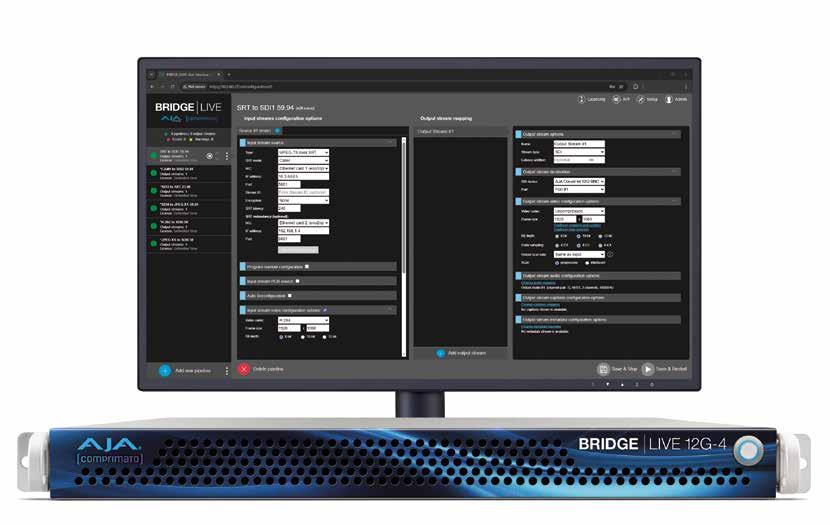
We’re seeing a lot of convergence. The worlds of broadcast and AV are coming together.
“While the world likely won’t move to full virtualization overnight, we know there are customers interested in it, so we’ve been developing Virtual KONA over the past year”
A good example is the corporate and education sectors. Those industries increasingly want to do what broadcasters are doing—they want the same kind of quality content. They want to centralize training and then distribute it widely, not just within their own country but sometimes globally.
That’s where our BRIDGE streaming IP video products have been very popular. They allow you to connect the traditional baseband SDI video world with the IP side of things.
So, for example, you can take an SDI-based studio that’s producing content for education or corporate training and then disseminate that content globally using BRIDGE. That use case has been right at the top of the list in terms of demand.
We’re also seeing this trend in sports. More sports organizations want to share their content more widely, while maintaining high quality. That’s been another big growth area for us. Overall, we’re working with customers who have big ideas—organizations that
want to put in infrastructure to share centralized training and news throughout their education or corporate networks. A good example would be large insurance companies. They’re essentially running centralized training hubs using our hardware, distributing content as if they’re running their own small TV station.
Partnerships are central to AJA’s business — what strategy do you pursue, and what types of alliances are you forming?
Partnerships are certainly a huge part of our business. AJA has always worked with third-party technology providers who develop tools that complement our technology, in addition to having an OEM side (Original Equipment Manufacturer) of the business, which a significant portion of our revenue comes from. We literally have hundreds of OEM partners—companies that build their software around our hardware.
In the color space we work with Pomfort, known for their LiveGrade application. We make sure AJA hardware integrates seamlessly with their software. Then there are other partners we collaborate with more directly across both hardware and software, such as Comprimato and Colorfront.
“Large insurance companies are essentially running centralized training hubs using our hardware, distributing content as if they’re running their own small TV station”
Colorfront, for instance, has been a long-term partner. They’re widely regarded as leaders in color science, and we’ve been producing HDRcompliant technology with them for around 10 years.
One of the latest results of that partnership is our ColorBox device for inline color transformations, which runs Colorfront software under the hood inside our hardware. That combination has been very powerful.
Comprimato, meanwhile, are leaders in the streaming software world. Our partnership with them to co-develop our BRIDGE products really is a perfect fit: we have the hardware that customers want, and their software enables high-quality streaming. Collaborating with them has been fantastic, and the joint solutions have been very well received.
From my position inside AJA, I have direct access to both Colorfront and Comprimato through our product management team. When customers bring me requests, I can feed those straight back to the partners, and we can begin developing what’s needed. That’s really exciting—it feels like we’re all working together.
Those relationships have only grown stronger. AJA is very much about relationships, whether it’s supporting customers years after a sale or ensuring our partners receive the same level of support. Of course, it’s not always easy—it can be technically challenging— but working with competent and patient partners is incredibly rewarding, and we’re very fortunate in that respect.
I imagine you recently attended the IBC Show. What were your key takeaways? I think we’ve already touched on some of them,
but what ideas did you bring back from the exhibition?
It was interesting. For me, this year felt different—the conversations I had were more concrete. People were actually taking steps forward with technologies like SMPTE 2110.
In the past, there was interest, some experimentation, but this time it felt real. The discussions were about actual infrastructure changes: “Okay, we’re going 2110 in this new facility. We want to work with you. How can we do that? How does this fit with what we already have?” That was
“For me, this year felt different—the conversations I had were more concrete. People were actually taking steps forward with technologies like SMPTE 2110”
“The people who came were there for a reason—they needed information, they’d been tasked with finding it. For me, it felt like we were having genuine, meaningful conversations about what’s next”
very interesting, because it wasn’t just testing anymore. It was, “We’re actually doing this now.”
Overall, it was a quieter IBC in terms of big messaging. It felt more grassroots, more about people being ready to take that step. Yes, attendance numbers were a bit lower, but the flip side was that the conversations we did have were valuable and serious.
The people who came were there for a reason—they needed information, they’d been tasked with finding it. For me, it felt like we were having genuine, meaningful conversations about what’s next. And 2110 definitely feels like it’s happening now.
I’d also like to focus on the current global context — instability and more restrictive trade policies. How is AJA addressing these challenges, and what is your strategy as a company?
Tariffs, of course, came up a lot. We’re a U.S.-based company with a global
footprint, and it’s difficult, but we try to be as agile as we can. We plan as far ahead as possible to give customers the opportunity to buy what they need without being penalized later. If a customer has a large project and we can ship ahead of a tariff change, we try to do that. Unfortunately, sometimes it’s just impossible—being a U.S. company, we have to comply with U.S. rules and regulations.
We also try to add value in other ways—through service, support, and partnerships. We’re incredibly grateful to our channel, who have been patient and proactive. Globally, they’ve made smart decisions that helped them get ahead of some of the challenges Tariffs present. Wherever we can, we’ve tried to be agile and guide customers through the minefield.
From a manufacturing standpoint, we’ve also had to be very strategic. Every product is built from a bill of materials, so we’ve had to be smart about sourcing components. If we can
make the right decisions on parts, we can control costs better and pass those savings along.
Looking ahead, are you planning to launch any new solutions or technological innovations that you can share with me?
Virtualization is a hot topic and one we’re exploring. We actually previewed Virtual KONA at IBC last year, and it’s something we’re still working toward bringing to market.
“We
literally have hundreds of OEM partners—companies that build their software around our hardware”
While the world likely won’t move to full virtualization overnight, we know there are customers interested in it, so we’ve been developing Virtual KONA
over the past year, and that work continues. We’re collaborating with Amazon Web Services on that.
I think it’s exciting for us to say: “We know you want to move into the virtual world, and as you do, we want to give you the same experience you get with our hardware.” For us, the key is reaching those customers. Many of them are still figuring out what a virtualized workflow looks like, but we want to be there with a KONA product that provides the same stability and support. If they move away from traditional hardware, they should have the same experience they know today with KONA—just in a virtual environment.
That’s ongoing. And, of course, development around SMPTE 2110 continues as well. At IBC, we introduced a new product, the IP25R, which was very well received. It’s a MiniConverter, and it’s exactly what people are looking for—again, connecting the baseband video world with the IP world.
I think you’ll see more from us in that space. I can’t share specifics yet, but it’s definitely an exciting area for us right now.
Is there anything else you’d like to add?
Overall, things are going very well for us.
We’ve released six products —three at NAB and three at IBC—so we’ve introduced an incredibly strong product lineup this year. These solutions address challenges that professionals are experiencing in the field and have all been very well received.
It feels like we’re enjoying our moment. This has been a strong year for us, even amidst the challenging times we discussed earlier. Having such a strong offering, great support from the channel, and excellent feedback from customers, have been very encouraging.
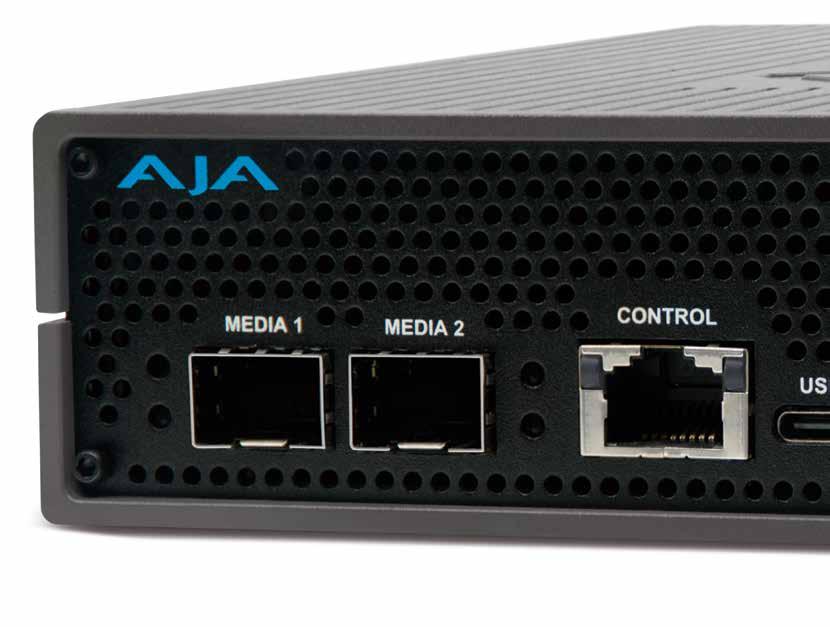
“From my standpoint, one of the main goals is to better understand what everybody needs – from end users to resellers, and the distribution channel – and to be their go-to technical contact”
For us, the goal is to keep innovating, keep bringing products to market that people really want, and continue having these important conversations with the channel, the dealers, and the end users. That’s what drives us forward.
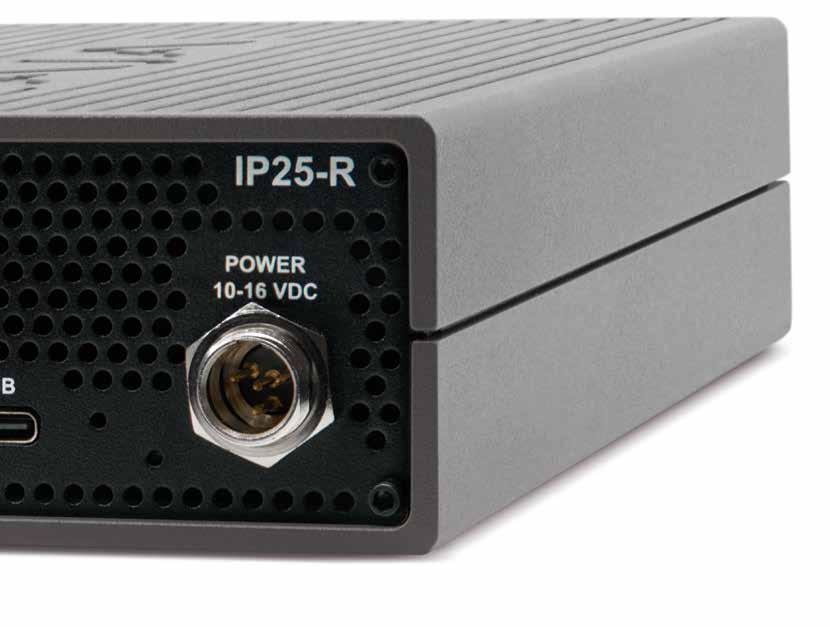
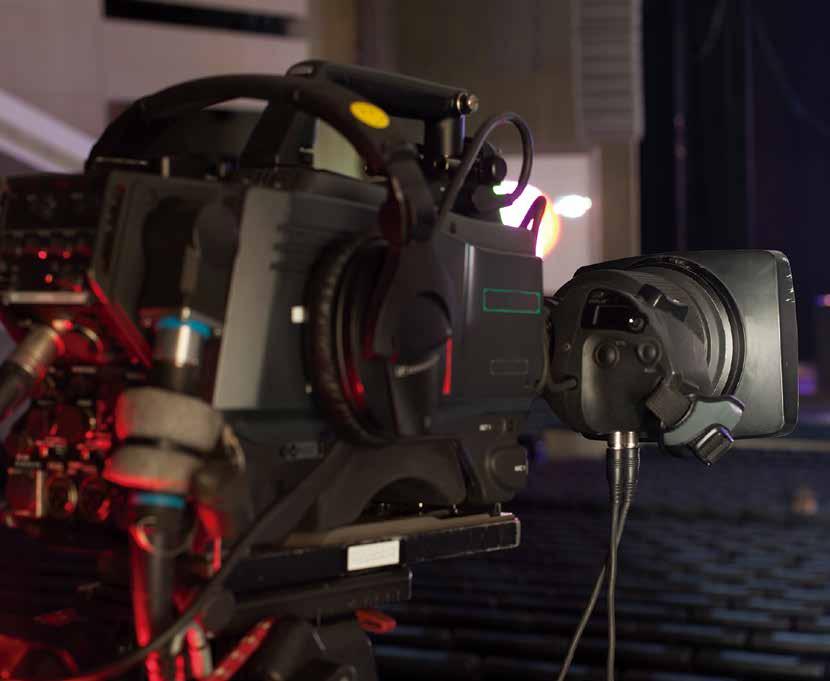
By Daniel Esparza
We extract some key insights from the recent 2025 Industry Outlook and Trends Analysis (IOTA) report with the help of Sean Wargo, VP of Market Insight at AVIXA

The audiovisual industry is growing at a slower pace than expected, but it remains a sector on the rise. This is one of the conclusions drawn from the recent 2025 Industry Outlook and Trends Analysis (IOTA) report.
The latest IOTA forecast anticipates a compound annual growth rate (CAGR) of 3.9% for the audiovisual industry over the coming years —1.4 points below
the previous estimate, but still signalling consistent expansion. “The AV industry continues to grow more quickly than general GDP, largely due to organisations' ongoing digital transformations, including requirements for collaboration tools and immersive technologies,” explains to TM BROADCAST Sean Wargo, VP of Market Insight at AVIXA, who helps us extract the main takeaways from this report.
This steady pace is being driven by the corporate, education, entertainment, and healthcare sectors, which continue to prioritise audiovisual technologies to enhance communication and engagement. From hybrid work environments to experiential retail and immersive learning spaces, AV solutions are now deeply integrated into how organisations operate and interact.
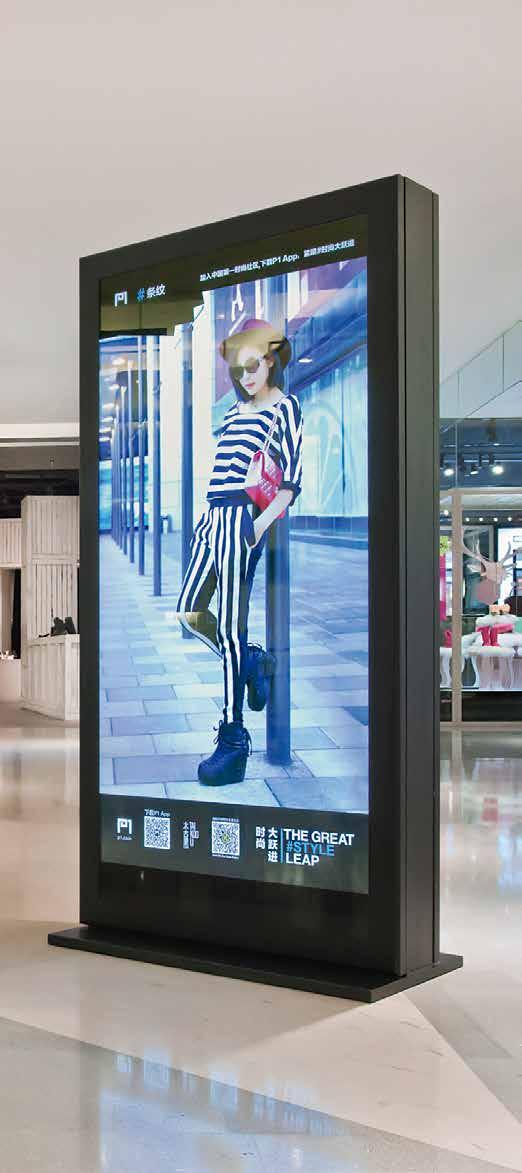
However, the global context remains uncertain. Like most industries, the AV market faces persistent challenges related to inflation, tariffs, supply chain instability, and high interest rates. Sean Wargo notes that these factors are interconnected and together form a web of pressure on investment and end-user spending.
“Though the shift to OpEx has been suggested, the data so far has not supported a larger movement in this direction”
“Inflation, tariffs, supply chain, and high interest rates are all interwoven as headwinds for end-user spending on pro AV,” he says. “Tariffs contribute to supply chain challenges and inflation which then creates a push for higher interest rates that make financing a greater challenge.
Even spending that is funded through operational expense is hampered by higher priced goods.”
Despite these headwinds, the sector continues to show adaptability. The substitution effect— buyers opting for different technologies or configurations to maintain spending levels—has helped the industry remain more resilient than others. “Pro AV is ripe with substitution effects that help provide buyers with choices that keep spending flowing, allowing the industry to exceed other parts of the economy in outcome,” Wargo remarks.
Yet, new challenges are emerging. Beyond macroeconomics, the VP of Market Insight at AVIXA highlights talent shortages in technical fields and evolving sustainability regulations as areas the industry must actively address to sustain long-term growth.
Globalisation and regional dynamics
Another key element shaping the outlook is the changing geography of
the AV business. Wargo observes that, while globalisation is holding steady, there is a clear trend toward stronger regionalisation.
“India’s digital transformation strategy and the growing demand for educational and corporate solutions are key drivers”
“Globalisation appears to be maintaining its course, while regionalisation is growing,” he notes. “Developments in local markets, including India’s economic growth or Europe’s emphasis on green standards, result in specific opportunities tailored to each region.”
This dual dynamic—global connection combined with regional adaptation—can influence how trade shows and professional events evolve in the coming years. “Trade shows might adjust by increasing their regional focus; however, global platforms are still important for facilitating cross-border
knowledge sharing and collaborations,” says Wargo.
new normal
One of the defining trends of recent years is the convergence of AV and IT.
Wargo describes it as one of the main forces reshaping how AV systems are designed, implemented, and maintained. “Convergence remains a significant trend in today's environment,” he explains. “Increasingly, AV systems are deployed over IT infrastructure, elevating the importance of interoperability, cybersecurity, and network management within projects.”
This integration creates substantial new opportunities for growth. “IT budgets increasingly include AV solutions and position AV as an essential component of enterprise technology ecosystems.”
Artificial intelligence as a catalyst
No analysis of 2025 technology trends would be complete without
considering artificial intelligence. Though still difficult to quantify in economic terms, AI’s impact across the AV value chain is already evident.
“Although difficult to measure, artificial intelligence demonstrates a significant multiplier effect across the value chain,” Wargo explains. “Applications such as predictive maintenance, real-time translation, intelligent content curation, and audience analytics are driving greater efficiency and unlocking new revenue streams.” These advances, he adds, will serve as a catalyst for growth, likely exceeding baseline forecasts.
Artificial intelligence may be at the forefront, but it is not alone. Several other technologies are exerting a strong influence on the sector’s evolution. “There are a few including extended reality (XR) and cloud collaboration platforms, with advanced displays all being transformative, while evolving interoperability
standards will ease adoption and broaden markets,” says Wargo.
One question that frequently arises in market analyses is whether AV companies are shifting their business models from capital expenditure (CapEx) to operational expenditure (OpEx). Wargo believes that, while this conversation is ongoing, the data does not yet show a dramatic shift. “Though the shift to OpEx has been suggested, the data so far has not supported a larger movement in this direction given the sheer scale of CapEx related project work across the markets,” he points out.
However, certain segments are more suited to an OpEx approach due to their link with ongoing productivity
needs. “Some areas of pro AV, like conferencing and collaboration, are more conducive to such a shift, given their linkage to on-going productivity needs of corporate enterprises.”
Innovation in the AV sector increasingly comes from new entrants and startups. Wargo recognises that these companies bring flexibility and fresh perspectives that often accelerate change.
“Startups introduce new technologies and flexible approaches, including AI-driven, cloud-native, or specialised solutions,” he notes. “Established companies offer large-scale operations with integrated systems and consistent performance. The interaction between these groups contributes to the diversity of the market.”
“Trade shows might adjust by increasing their regional focus; however, global platforms are still important for facilitating cross-border knowledge sharing and collaborations”
One of the report’s most notable findings is the rise of India as a leading growth market in the AsiaPacific region, overtaking China in terms of growth rate—though not yet in total market size. “First a clarification that rise of India relates specifically to its higher forecasted growth rate than China for the forecast period,” Wargo clarifies. “In terms of sheer market size, China will remain the larger total market for pro AV during the forecast period.”
Still, India’s momentum is undeniable. “India’s digital transformation strategy,
infrastructure investments, and the growing demand for educational and corporate collaboration solutions are key drivers. Furthermore, a young, techsavvy workforce combined with comprehensive government initiatives, continue to accelerate AV adoption.”
Finally, the convergence between broadcast and AV stands out as a defining trend connecting both industries. The boundaries that once separated content production from corporate communication or live events are increasingly blurred.
“Broadcast and AV industries are currently undergoing convergence,” Wargo confirms. “An increasing number of integrators and solution providers are working across both sectors, influenced by shared technologies and changing content expectations.”
This overlap is fuelling demand for IP-based workflows, immersive content delivery, and flexible production environments, particularly in corporate, educational, and entertainment applications. “The interaction between broadcast and AV is contributing to growth in both fields,” he concludes.
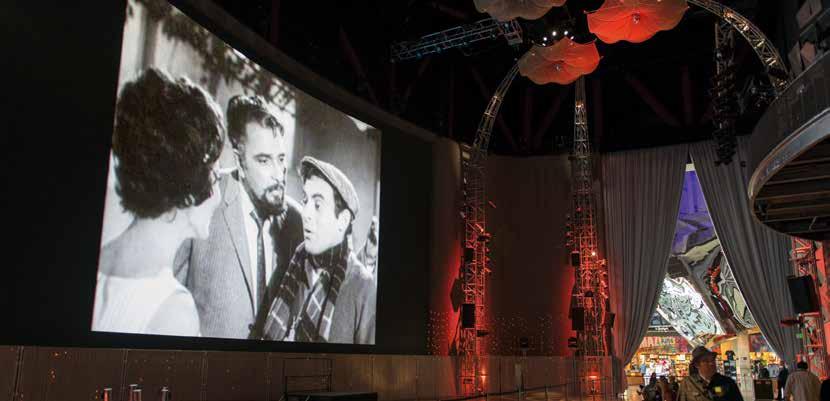

By Alonso Valdivia, Technical Specialist for AVoIP Broadcasting

Several years ago, a name began to ring loudly in control rooms and broadcasting studios: NDI (Network Device Interface). This protocol forever changed the way we send video over a network. All of a sudden, an Ethernet cable was enough to move multiple high-definition signals, with minimal latency and without the need for dedicated SDI cards. For many it was like opening a door to a more agile and flexible future.
But like everything in this technological world, new technologies are always springing up. A new name promises to do the same, but with a twist that could turn it into a game changer. That name is OMT – Open Media Transport.
The old-timer: NDI and its IP video reign
NDI was born in 2015 from the hand of NewTek and quickly became the protocol of choice for production over IP. Its strength was practicity: very low latency, automatic discovery of sources on the network, support for hundreds of products and a friendly learning curve. A 10GbE network was no longer required to move 4K video, a Gigabit was enough.
Over time, NDI established itself as a standard in broadcast workflows, sports, corporate streaming, and even in educational production. However, behind this apparent universality there was a detail that never went unnoticed: NDI is a proprietary system. It is based on a closed SDK and controlled by Vizrt, the company that acquired NewTek.
OMT has already planted its banner: it is open, flexible and responds to a real need of the industry. It is likely that during the next few years both systems will coexist
The new rival: what is OMT and why is it a threat to the giant?
OMT (Open Media Transport) is a royaltyfree, open-source IP video protocol licensed under MIT. It was born in 2025, driven by the community, and relies on a strong participation of developers linked to vMix and Sienna, two companies that had historically built solutions based on NDI.
The comparison with NDI is inevitable as they both pursue the same goal: to send high-quality video and audio over a common network, with minimal latency and without relying on proprietary hardware. In essence, OMT wants to be what NDI was in 2015, but this time without any padlocks.
Hence the narrative that is so exciting for many: what if OMT becomes
the “free NDI” that everyone was expecting?
OMT's weapons: technical specifications
Let's tell the story from the technical side, because that's where OMT poses itself as a serious rival.
OMT uses a lightweight codec designed for minimal latency. It supports 4:2:2 video as a standard

production format, but also supports variants such as 4:4:4 with alpha and depths of up to 16 bits per channel, thus making it suitable for both broadcast environments and demanding HDR and graphics streams with transparency.
As for audio, OMT broadcasts in uncompressed floating 32-bit PCM, with up
to 32 channels per stream, making it suitable for complex productions.
Bandwidth is a key issue. OMT offers three
quality settings (Low, Medium and High), which adjust compression according to network needs. Approximate values are:

These figures show its versatility: it can be more efficient than NDI in certain scenarios, or scale up to higher quality if the network so permits. Latency remains in the range of less than one frame, which is comparable to the NDI experience.
OMT (Open Media Transport) is a royalty-free, open-source IP video protocol licensed under MIT
OMT also features automatic discovery by using DNS-SD (similar to Bonjour) and allows to attach XML metadata synchronized by frame, which is useful for tally, subtitles or automation. All this comes with the benefit that anyone can read, adapt and improve the code.
As for the protocol, it relies exclusively on TCP unicast connections, which ensures reliability and simplicity in small or medium-size networks. However, this scheme implies that
each receiver requires its own flow, thus resulting in increased bandwidth consumption as the number of destinations grows. This is unlike NDI, which can operate in multicast mode and distribute a single stream to multiple receivers more efficiently on large-scale projects.
battlefield: where to try OMT nowadays
A technological promise is worth little if it cannot be tweaked. And here OMT begins to demonstrate that it is more than just a concept.
› vMix 29 already features native support for sending and receiving OMT streams, which makes it a key platform for testing in professional environments.
› OBS Studio has an official plugin based on FFmpeg that allows OMT to be easily integrated, both for sending and receiving.
› Sienna released free apps (Free OMT Tools), some of which are very similar to what we have in NDI tools.
› In addition, patches for FFmpeg open the door for applications such as VLC to adopt OMT in a short timeframe.
In regard to dedicated hardware, there are no cameras or switches equipped with built-in OMT yet, but as it is open-source, any manufacturer can implement it without restrictions. It is not unreasonable to think that we will soon see firmware updates announcing compatibility.

Here is where the story gets interesting. Can OMT overthrow NDI? The honest answer is: not yet.
NDI has a ten-year head start, a gigantic ecosystem, and strong business backing. For large-scale productions, it's still the safe choice.
But OMT has already planted its banner: it is open, flexible and responds to a real need of the industry. It is likely that
during the next few years both systems will coexist. NDI as the well-established king of mass productions, and OMT as the young challenger that is making headway into medium-size, educational or experimental projects. With a broad level of adoption, it could well end up taking the place of the prevailing standard.
So the next time you hear about OMT, think of it not as the immediate replacement for NDI, but as the start of a new chapter.
A chapter where community, transparency and open-source code come into play to shape the future of IP video.
In regard to dedicated hardware, there are no cameras or switches equipped with built-in OMT yet, but as it is open-source, any manufacturer can implement it without restrictions
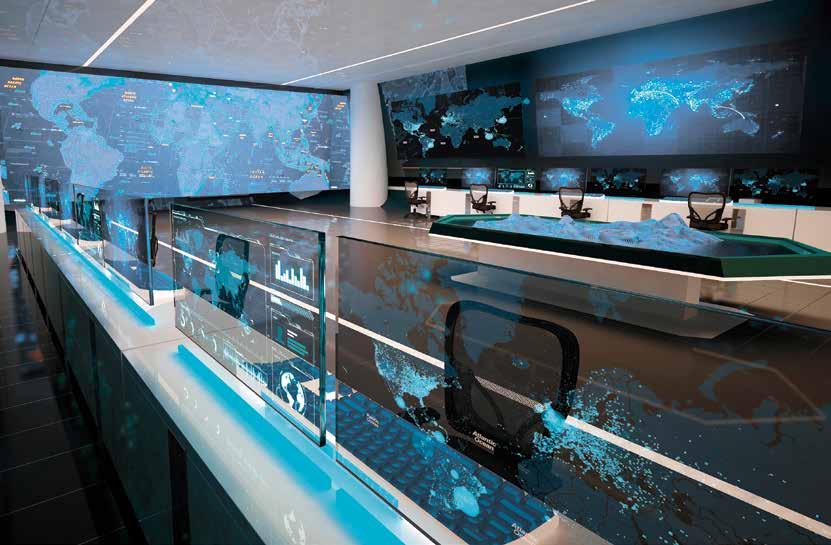
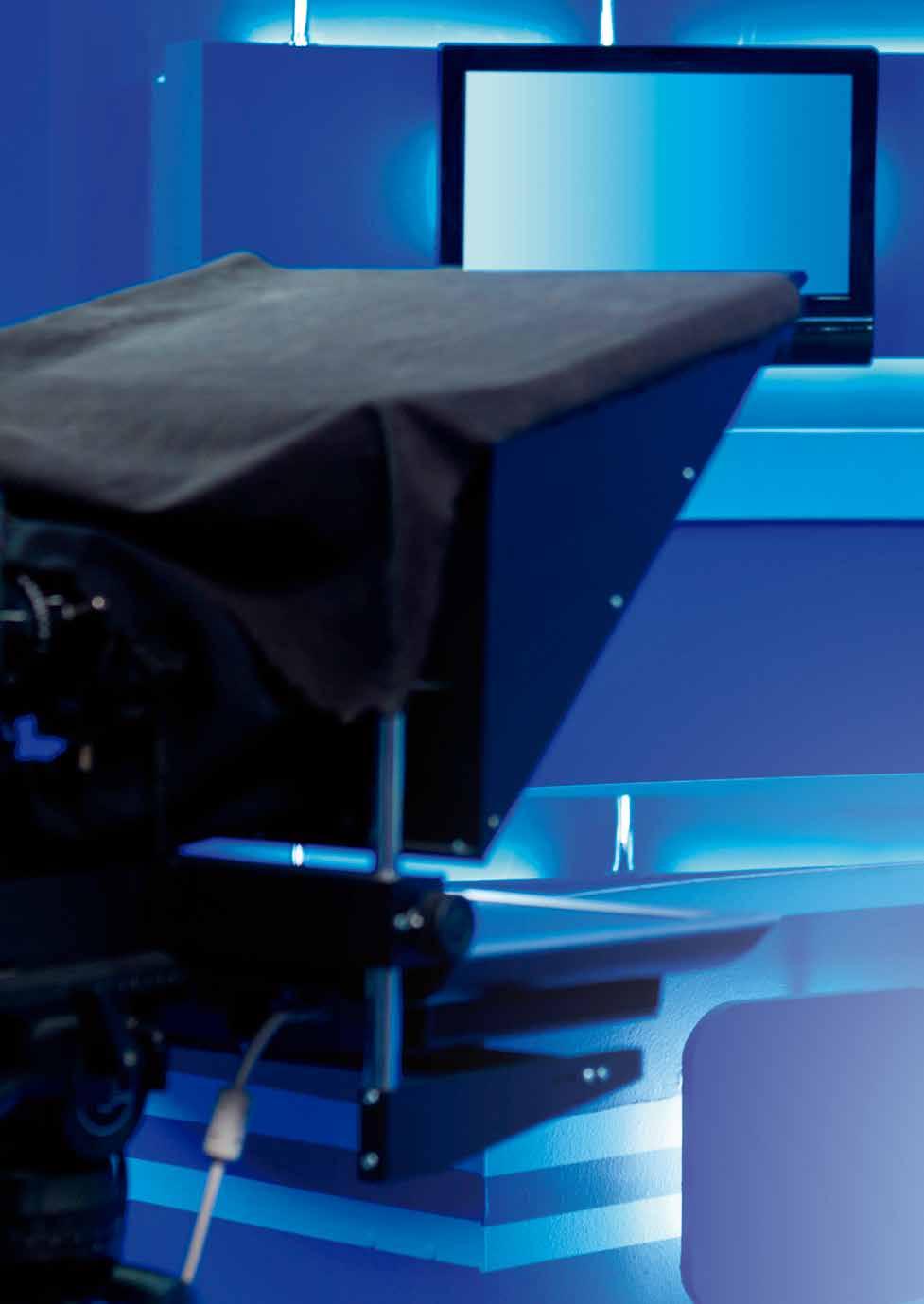

By Carlos Medina, Audiovisual Technology Advisor
Teleprompters have become a fundamental tool for the proper running of a live show in the field of content production for television and events
What do Anderson
Cooper (TV anchor, USA), Dwight D. Eisenhower (US president between 1953 and 1961), Felipe VI (King of Spain, 2014 - present time) Ana Blanco (TV presenter, Spain), Andreu Buenafuente (presenter and comedian, Spain), Xi Jinping (President of the People's Republic of China, 2013 - present time), Graham Norton (TV presenter, Ireland/UK) all have in common? Surely there are many differences and similarities between them but what they share is the use of a teleprompter.
The teleprompter -also known as autocue or prompter- has become an essential tool for the correct running of a live broadcast in the field of content production for television and events. It is the perfect solution to establish a direct dialogue between viewers and presenters, communicators, and collaborators who are then able look and speak directly to the camera.
But, it is also a resource enabling to read scripts, presentations, speeches, program introductions, monologues, etc., thus providing greater smoothness, freshness and assurance, without having to worry about the much dreaded lack of memory, confusion or cluelessness.
The teleprompter was originally invented by Hubert Schlafly (1919-2011) in 1950, when he was working as an electrical engineer for Twentieth Century Fox.
This is a device that was first equipped with a roll of continuous paper, featuring one-inch letters and powered by electric motors that allowed to present, in the first place, the texts to actors/actresses in order to avoid memory errors. A breakthrough, as it replaced any other medium that facilitated the work of actors and presenters, such as a blackboard, cardboard, cards or loose sheets.
Everything arose from the need of his friend -actor Fred Barton Jr.- to find a way to remember the scripts. Thus, Hubert Schlafly's invention was used for the first time ever in the soap opera ‘The First Hundred Years’ (CBS).
Out of this friendship between Fred Barton Jr. (actor) and Hubert Schlafly (electrical engineer), together with Irving Kahn (radio and television executive), the company TelePrompTer Corporation (1950-1981) was set up.
Hubert Schlafly (TelePrompTer Corporation) received an Emmy Award in 1999 for his technical contributions to television, in recognition for his invention of the teleprompter and its impact on the broadcast industry.
What has been happening since the 1950s is simply constant innovation towards teleprompters more suited to the needs of TV and live events. The 1980s saw the transition
to electronic monitoring systems. The 90s came and, with them, the digitization of the entire process. Portable models and widespread use arrived with the new millennium. Nowadays, apps, voice control, multi-device and cloud synchronization, and AI lead us to refer to a teleprompter system, that is, a combination of equipment and technologies.
Two teleprompter systems can be found. One clearly aimed at the field of television and the other known as podium or presidential teleprompter
First of all, we have everything that allows creation of content, that is, specialized software to render the correct format to texts, scripts and presentations that will be shown to the presenters.
Of course, nowadays, everything runs under the operation of a computer.
Some of the most used are PromptSmart Pro (voice control); Teleprompter Premium (iOS); Elegant Teleprompter (Android); PowerPrompter (Mac); Free Teleprompter Online (browser-based), EasyPrompter, TVprompt in its LE, XPro, Pro and MOS versions, or DVPrompter, among others.
Secondly, we refer to the presentation side. It consists of a screen connected to the computer, tablet, smartphone or laptop (provided with the software) and a reflecting glass (Beam Splitter) where the text generated by the above-mentioned software/ computer is projected.
And third and last, what amounts to remote operation through a pedal, remote unit, mouse, Bluetooth, app or remote control, depending on the solution installed.
Two teleprompter systems can be found. One clearly aimed at the field of

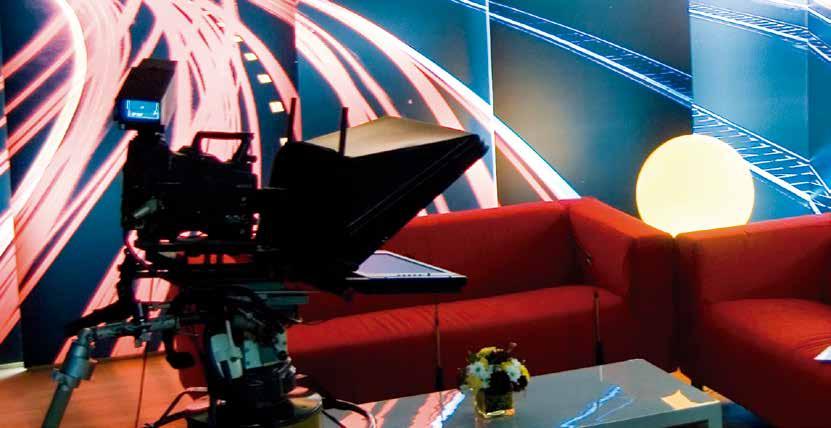
television (Teleprompter TV - TPTV), where the text presentation screen is placed just below a glass tilted a number of degrees and opposite the camera lens. This tilt causes the screen light beams not to enter through the camera lens. It involves carrying out a technical installation with the camera, whatever its type (plate with optical coupling, ENG, DNG, EFP, Compact, DSRL, Multipurpose, PTZ,...). This is the most popular solution, especially in most international, national, regional or local TV programs (news, game shows, talk shows, magazines...).
There is also another teleprompter system, known as podium
or presidential teleprompter. In this case, the presentation device is only a transparent glass where the text is reflected and is placed on a mast at the level of the speaker's eyes. In addition, it is visible only to the speaker, hiding the text from the audience's point of view. This system is very commonly used in live events such as political events, business conferences and ceremonies, educational institutions, etc. Among the prominent manufacturers, we find AUTOCUE with its Kit Navigator Plus Conference model; DATAVIDEO TP-800; TVPROMPT TVConfer-Dual; TeleprompterPAD iPresent PRO Pack... and more.
Nowadays, apps, voice control, multi-device and cloud synchronization, and AI lead us to refer to a teleprompter system, that is, a combination of devices and technologies
In the field of concerts and theater, what is typically used are simple monitors or presentation screens, where the lyrics of the songs, texts and even the sequencing of the beat sheets are shown, together with other data normally used in the relevant live show to allow better coordination with singers and actors/ actresses. And, if necessary,
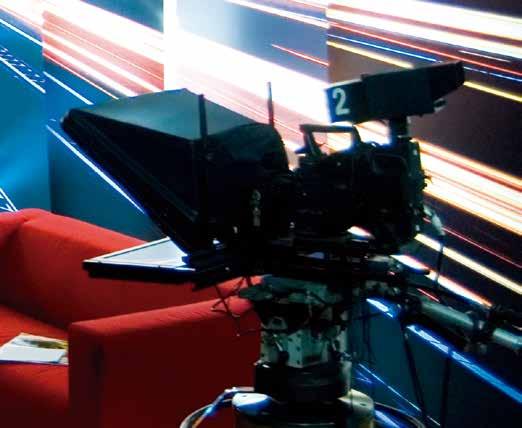
obviously, podium teleprompters can also be used.
The teleprompter has become a key element in audiovisual and live events. There are professional, portable, amateur solutions and even for home environments. The main teleprompter solutions within the broadcast TV environment are:
› AUTOSCRIPT – AUTOCUE. One of the most renowned brands and products in the broadcast industry. It offers a wide range of teleprompters, from portable models to integrated systems for news studios. Its QMaster/QBox IP system allows teleprompters to be controlled over a
network, thus facilitating synchronization in complex production environments. Some models are: 19 Pioneer Studio Box Lens; 19 Explorer; 12 Pioneer Jib; EPIC IPM,...
› CUESCRIPT. It combines design and functionality, offering solutions ranging from portable teleprompters to advanced studio systems. It stands out for ease of integration with existing production systems and an intuitive interface. Recently, the CSMPPB Perfect Balance Plate has been launched, which makes it easy to set up the system.
› DATAVIDEO. It offers teleprompters such as the TP-900 and TP-950,
designed for PTZ cameras and tablets, respectively. These models are ideal for live productions and conferences, and provide portable and easy-toconfigure solutions. Also, the TP-300 for Apple and Android tablets.
› TVPROMPT. One of its most significant models is the 24" LIGHTWEIGHT STUDIO, a professional teleprompter with beam splitting mirror, an ideal solution for studios and live productions. Available in standard and high-brightness versions, it is compatible with lightweight cameras and offers an easy setup.
This Spanish brand has presented its new range of PTZ (Pan-Tilt-Zoom) cameras and integrated teleprompter systems.
› FORPROMPT STUDIO (Fortinge). It is a comprehensive teleprompter solution designed for professional users, including broadcasters, television studios, educational institutions and companies.
It offers features such as run lists, preview, remote management, inversion, and support for SDI and NDI outputs.
› TELESCRIPT
INTERNATIONAL. With more than 60 years in the industry, it provides high-quality teleprompter hardware and software for television and film. It offers customized solutions adapted to the specific needs of each production.
And since audiovisual is much more than the traditional television market, we can find more manufacturers that are spreading the use of teleprompters in the educational environment, vloggers, youtubers and more independent productions:
› FEELWORLD. It is renowned for offering accessible and functional teleprompter solutions. Current models that are worth noting: TP2A, TP10, TP16...
› IKAN. This manufacturer guarantees ease of use, portability and compatibility with tablets
in its products. Some of its best-known models are PT-Elite Pro 2, PT1200-TK and PT4700-TK, among others.
› GLIDE GEAR. Koncept Innovators, LLC, better known in the trade as Glide Gear, was founded in 2010 by a group of amateur digital filmmakers and features four product ranges: Consumer Series, Pro Series, Interview TP and The Little Prompter.
› PROAIM. Somewhat less known, but noteworthy for offering solutions adapted to tablets and mobile phones: TP-50, P-TP300 and P-TPI.
› SMALLRIG. We must mention the multifunctional Teleprompter SmallRig 3646, designed for recording with a mirrorless camera.
› ELGATO Prompter. With a very limited offering, it is presented on the market with a compact tool compatible with Mac or PC computer systems, and for different types of cameras, smartphones or webcams: model 10WAD9901.
New innovations and artificial intelligence have also been incorporated into cue control and management. Thus, Vitec group has introduced Autoscript Voice, an advanced voice recognition technology that frees presenters and production staff from their scroll control devices. By using Voice for WinPlus-IP, presenters are able, in a reliable and accurate way, to have real-time control of the scrolling of text on the screen simply through voice.
It is essential to compare and test the various existing solutions within budget constraints and according to certain key technical parameters: from weight, design and solid construction, through aspect ratio, brightness (cd/m2), input signal and connections (BNC, HDMI, VGA, DP...), resolution, viewing angle (h/v)...; to compatibility with cameras.
We are in 2025; teleprompter offering is wider and more varied than ever 75 years after its invention.

TMBROADCASTbreakfast
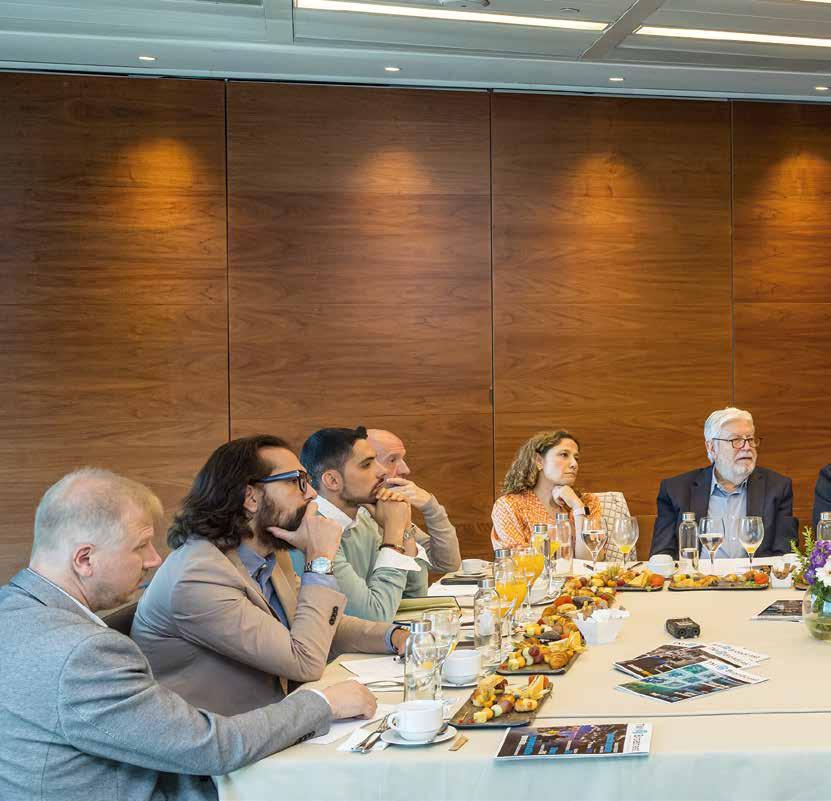
The industry is moving toward more flexible infrastructures that will require a complete redesign of workflows. The change is already underway, presenting both challenges and opportuniti es.
TM BROADCAST SPAIN brings together a diverse group of technical and executive leaders to outline the key principle s guiding this transition
By Daniel Esparza
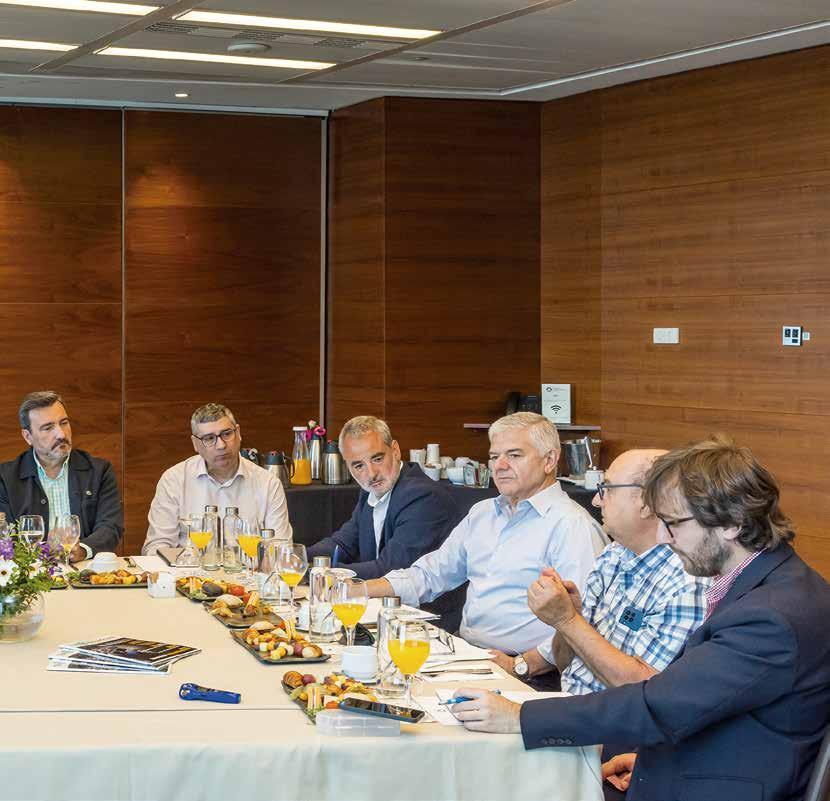
By its very nature, the television industry is particularly cautious when it comes to adopting new technologies in its workflows. Broadcasting is continuous and cannot afford interruptions. But this does not mean it is immune to the far-reaching
technological transformation affecting all markets. On the contrary, in areas such as artificial intelligence, the broadcast sector is often at the forefront of innovation. Something is clearly shifting within the industry, and the Spanish edition of TM BROADCAST set out to take
the pulse of the moment. To do so, it convened in Madrid a group of technical and executive leaders from across the sector in Spain to map out the current landscape and—more importantly—identify the keys to anticipating where the market is heading.
The event was sponsored by Telefónica Servicios Audiovisuales (TSA) and featured the participation of Asier Anitua, Business Development and Innovation Manager at TSA; César Bermejo, Key Account Manager at TSA; Jesús García Romero, Director of the Engineering Department at RTVE; Jesús Sancho, from RTVE; Pedro Espina, Technical Director at RTVA (Canal Sur); Jesús Sánchez Villalba, Technical Director at CMM (Castilla-La Mancha Media); Manuela Martínez, Head of Engineering and Maintenance at Movistar Plus+; Raúl Izquierdo, Director at TBS; Ángel Mancebo, Director of UNED Media; and Óscar Laviña, Storage Technical Sales Manager at IBM. The roundtable was moderated by Luis Sanz, audiovisual consultant and regular contributor to the magazine.
The debate began with a broad reflection, allowing each speaker to share brief insights into the current technological state of their respective organizations.
What has changed over the past decade in terms of production, broadcasting, or problem-solving, with the arrival of technologies like IP, NDI, UHD, HDR, or artificial intelligence?
The participants clarified that many of these technologies have yet to be fully implemented in their workflows—they are still in transition. A clear distinction was drawn between developments like the shift to IP, which is simplifying operations and enabling more flexible architectures, and others like the move to UHD, which adds unprecedented complexity to all processes, regardless of the perceptible improvements in image quality. This trade-off also sparked debate.
The conversation also touched on how ingest, editing, and archiving processes have evolved with the advent of new technologies. Overall, the panel agreed that the volume of content being generated today is vastly greater than in the past.
The leap to UHD
One common challenge introduced by UHD in ingest, editing, and archiving workflows is the massive amount of data involved. As such, a technological decision of this scale must be carefully evaluated. While the benefits in image quality brought by UHD and/or HDR are tangible to viewers, the panel also questioned whether the effort is always justified.
The main turning point was the return on investment. Is a client willing to pay what it currently costs to produce in UHD with HDR? In the case of a high-level football match or the Olympic Games, the answer may be yes—but not all content justifies the cost, and each case must be assessed individually. This was, broadly speaking, the shared view. Several participants also noted that HDR often brings more perceived value than the increase in resolution alone.



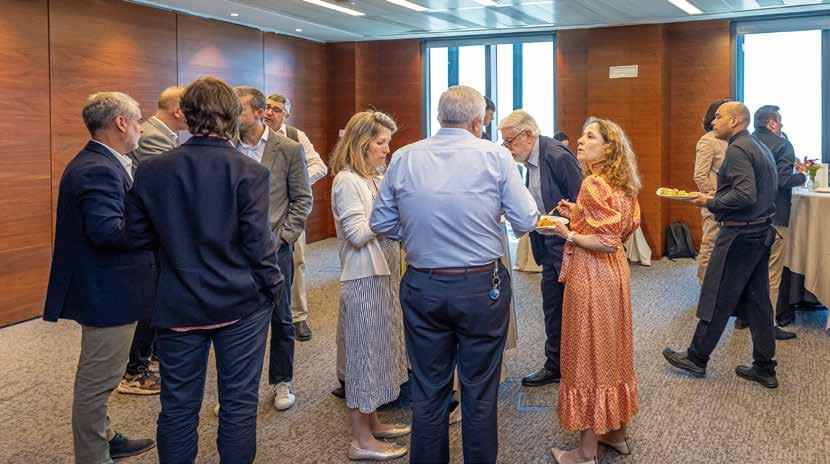

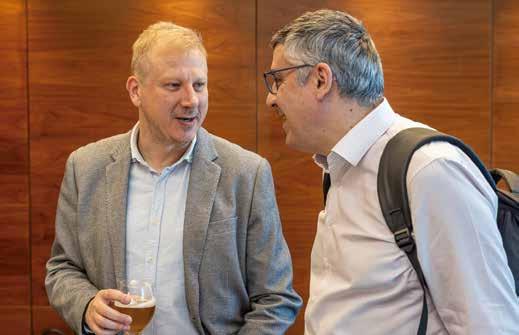
Another topic raised was the challenge faced by traditional broadcasters in renewing their systems due to the demands of continuous broadcasting. A key reflection emerged here: the impact of this technological shift on technical profiles.
The debate highlighted the ongoing disconnect between IT and broadcast departments. It’s a real dilemma: network specialists don’t always understand the criticality of a video signal, while traditional audiovisual technicians often lack IP expertise.

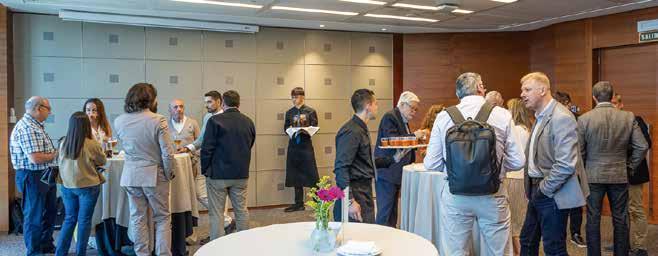

Yet both groups work within highly interdependent workflows.
The next part of the discussion focused on cloud usage and hybrid environments combining on-premise and remote services. Several participants shared practical use cases. Security, meanwhile, was identified as a key concern when migrating to the cloud. Generally, while the panel acknowledged this concern, they expressed trust in the guarantees provided by cloud service providers.
Artificial intelligence was also a major topic. While its potential is undeniable, its use also raises new questions around trust, ethics, intellectual property, and algorithmic bias. This part of the conversation raised more questions than answers—and rightly so.
The final sections of the roundtable explored the rise of OpEx models over CapEx. A clear distinction emerged between private and public entities. In the private sector, OpEx is much easier to adopt; in the public sector, however, it becomes a hurdle, due to inventory and cost forecasting requirements.
The discussion closed with a question about outsourcing: What are the advantages of delegating certain tasks to specialized companies? In general, the participants agreed on the importance of having strong in-house first-line support. From the second or third tier onward, however, full internal coverage becomes increasingly difficult due to the wide variety of brands and technologies involved.
Note: This article is an excerpt from a more extensive report that was published in a recent issue of the Spanish edition of TM BROADCAST.

